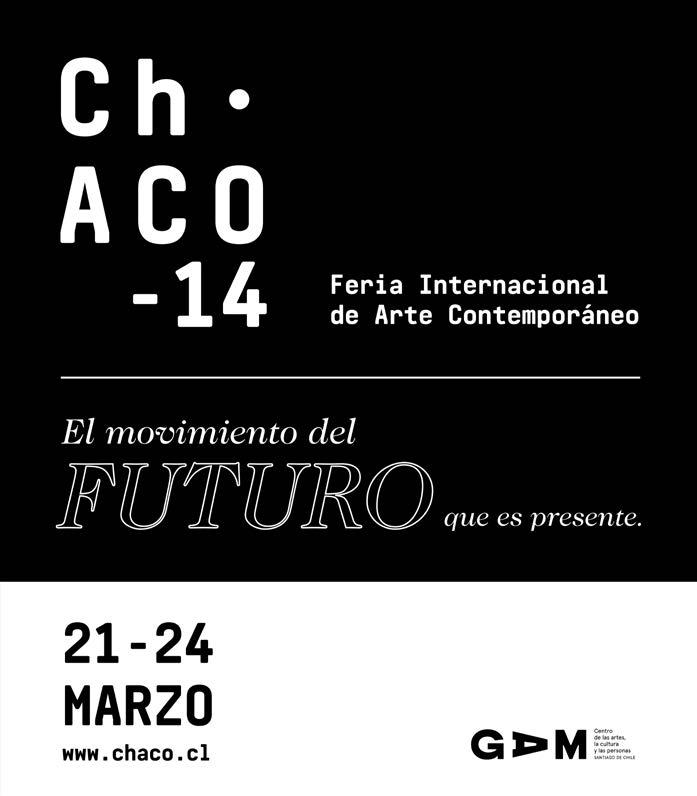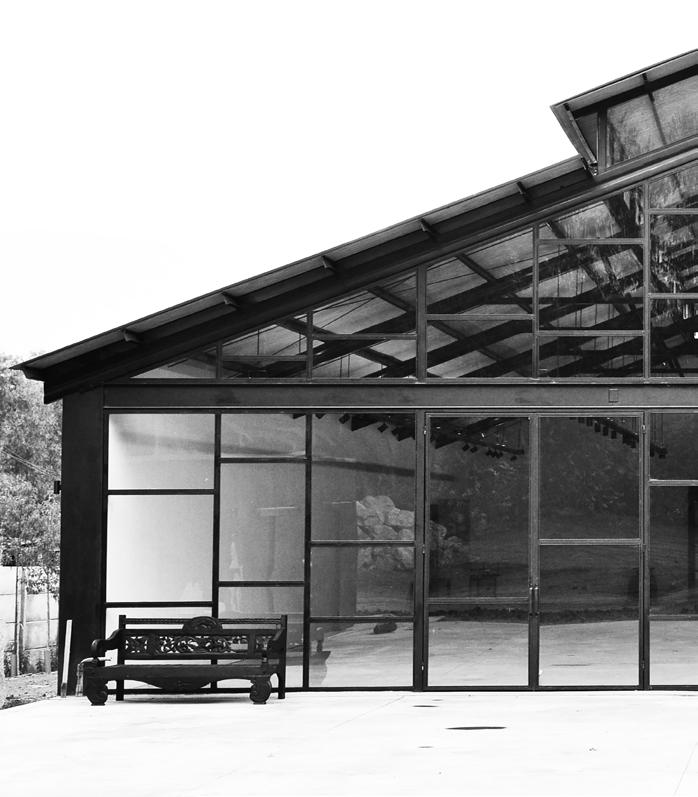
Alfredo de Stefano/México
Raquel Bigio/Argentina
Ysabel Lemay/Canada
Matilde Marin/Argentina




Alfredo de Stefano/México
Raquel Bigio/Argentina
Ysabel Lemay/Canada
Matilde Marin/Argentina


ha pasado más de un cuarto de siglo, 26 años desde que comenzamos nuestra aventura en el arte. Hoy, luego de muchas historias, se concreta un hito importante en esta línea de tiempo que seguiremos escribiendo. Abriremos una nueva etapa en este proyecto de arte: un espacio expositivo, con más de 500 metros cuadrados. Este volumen arquitectónico busca aportar al mundo de las artes visuales y entregar un espacio a la comunidad con un objetivo claro, exponer y apoyar a los artistas que forman parte de la colección Arte Al Límite y a tantos otros que puedan exhibir en nuestro espacio.
Los años de trabajo han demostrado que los sueños se hacen realidad. La portada de este número muestra nuestro espacio, el que será confidente de obras de las artes visuales. Sin darnos cuenta, volvemos al mundo expositivo, pero desde otra mirada, no como galería, sino como museo inserto en el Valle del Aconcagua.
No ha sido fácil, el esfuerzo de muchos es necesario para lograr cosas grandes. Palabras para describir lo que se siente son muchas, pero una prevalece: determinación. El coraje de todo nuestro equipo ha sido fundamental para avanzar sin miedos, para avanzar al límite. “Arte Al Límite Museo” abrirá cargando en su ADN una misión clara: mostrar lo mejor del arte contemporáneo, para generar un aporte a las regiones de nuestro país, y sobre todo a Chile.
Por su parte, nuestra revista en formato físico seguirá difundiendo entrevistas exclusivas a artistas, con la intención de mostrar las obras de quienes tienen trayectorias emergentes, consolidadas y consagradas; a artistas nacionales e internacionales.
Este año se viene nuevamente intenso, el primer semestre, caracterizado por la Bienal de Venecia en Italia y las ferias de Arte Basel en Suiza; en Chile con la reapertura de la Bienal de Valparaíso y feria Ch.ACO, instancias donde esperamos abrir puertas con nuestra nueva institución. Pero esta gran apertura aún tendrá unos meses de descanso, porque el museo se inaugura el segundo semestre convocando a todos los agentes del arte y artistas que deseen participar de este momento único para nosotros y para muchos que han confiado en Arte Al Límite.
Queremos agradecer desde ya a todas las personas que han contribuido en nuestro proyecto, artistas de los más variados países, curadores y críticos, editores y periodistas de la revista; a nuestros equipos de diseño; a quienes han aportado en el sitio web y las redes sociales; a quienes trabajan en nuestros stands de las diversas ferias de arte; al nuevo equipo del museo; y a todos quienes con sus conocimientos y voluntades han hecho posible de este sueño, una realidad.
It has been over a quarter of a century, 26 years, since we started our adventure in art. Today, after many stories, we celebrate an important milestone in this timeline we are still building. We will open a new stage of our art project: an exhibition space with over 500 square meters. This architectural structure seeks to contribute to the visual art world and provide the community with a space and a clear objective: to showcase the work of the artists making up the AAL collection and that of many others who can hold exhibitions in our space.
Our years of work have proven that dreams do come true. The cover of this issue presents our space, which will be a confidant of visual artwork. Without even realizing it, we have returned to the world of exhibition, from a different perspective: not as a gallery, but rather as a museum embedded in the Aconcagua Valley.
It has not been an easy road; the effort of the many is necessary to achieve great things. Words abound to describe how it feels, but one prevails: determination. The courage of the entire team has been fundamental in making progress without any fears, in pushing the limit. The Arte Al Límite Museum shall open its doors with a clear mission imprinted in its DNA: to show the very best of contemporary art, to contribute to the regions of our country, and, above all, the entirety of Chile.
Our print magazine will continue to disseminate exclusive interviews with artists, aiming to show artwork by emerging, consolidated and celebrated artists, of both national and international origin.
This year will be once again intense. The first semester will bring the Venice Biennale in Italy, the Art Basel fairs in Switzerland, the reopening of the Valparaiso Biennial, and the Ch.ACO art fair. We had hoped to make our way through these events with open doors in our new institution. However, the great opening will still have to wait a few months until the second semester, when we will summon all art agents and artists who wish to participate in this unique moment for us and for those who have trusted in Arte Al Límite.
We want to thank all the people who have contributed to our project in advance: artists from a wide array of countries, curators and critics, our magazine editors and journalists, our design teams, to all those who have contributed to the website and social media, those who work in our stands in several art fairs, to the new museum team, and to all those who, with their knowledge and disposition, have made this dream a reality.


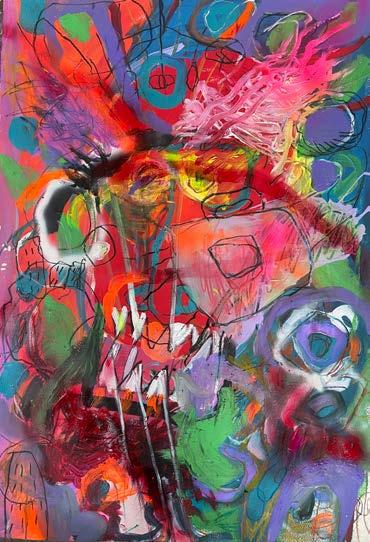
DIRECTORES
Ana María Matthei
Ricardo Duch Marquez
DIRECTOR COMERCIAL
Cristóbal Duch Matthei
DIRECTORA DE ARTE Y EDITORIAL LIBROS
Catalina Papic
PROYECTOS CULTURALES
Camila Duch Matthei
EDITORA
Elisa Massardo
DISEÑO GRÁFICO
María Nestler
FOTOGRAFÍA PORTADA
Jorge Azócar
CORRECCIÓN DE TEXTOS
Javiera Fernández
ASESORES
Benjamín Duch Matthei
Ricardo Duch Matthei
Milagros Duch Matthei
Felipe Duch Matthei
REPRESENTANTES INTERNACIONALES
Julio Sapollnik (Argentina)
REPRESENTANTE LEGAL
Orlando Calderón
TRADUCCIÓN
Adriana Cruz
SUSCRIPCIONES
info@arteallimite.com
IMPRESIÓN
A Impresores
DIRECCIONES
Chile / Francisco Noguera 217 oficina 30, Providencia, Santiago de Chile. www.arteallimite.com
VENTA PUBLICIDAD
+56 9 99911933.
info@arteallimite.com
marketing@arteallimite.com
Derechos reservados
Publicaciones Arte Al Límite Ltda.
Por Julio Sapollnik. Crítico de Arte (Argentina) Imágenes del archivo de Arte Al Límite.
Lo que perdura en el tiempo Standing the test of time
en su relación con el arte, Ana María Matthei cometió un pecado de juventud: comenzó pintando paisajes y figuras humanas. Esta experiencia le permitió conocer las dificultades que atravesaban los nuevos artistas para exponer: “¡Me exigían un mínimo de tres exposiciones y no tenía una!”. Comprendió así, como algunas galerías preferían trabajar con artistas consagrados, disminuyendo la igualdad de oportunidades para conocer artistas emergentes. Tras las negativas, logró realizar una primera muestra en un Centro Cultural, gustó y vendió. Percibió que había un espacio para crear una galería de arte que trabaje con nuevos nombres y permita exponer a los artistas no conocidos de las diferentes regiones del país.
En 1998 abrió la galería Matthei, un cubo blanco, donde exhibía artistas no vinculados a las galerías tradicionales y, también, consagrados de regiones. Así, presentó al grupo “Bajo Techo” y el grupo “Grisalla” y a artistas emergentes en el Santiago de aquel entonces. A partir del segundo año comenzó a exponer artistas de Argentina, Europa y EE.UU.
Comprendió que debía dar a conocer la galería en el extranjero. La primera feria internacional de arte en la que participó fue ArteBA, en Buenos Aires y después Miami. Cuando comenzó a realizar exposiciones, percibió que el coleccionista norteamericano siempre preguntaba: “¿Dónde está el catálogo?, ¿en qué revista salió publicado el artista?, ¿me das su página web?”, “¡Nosotros no teníamos nada de eso!”, explica Ana María.
Así nació una primera publicación que no fue una revista, sino, un buen catálogo. “Allí publicamos entrevistas a los artistas que exhibíamos, también comentarios sobre la feria en Suiza en la que habíamos participado y publicitamos una agenda con todas las exposiciones que, a lo largo del año, se realizaban en Galería Matthei. La colección de Arte Al Límite comenzó desde el inicio de la galería”.
Revista Arte Al Límite. Los orígenes Grande fue la sorpresa al advertir que diferentes artistas llamaban a la galería para solicitar entrevistas. Así nació la idea de fundar una revista
In her relationship with art, Ana María Matthei committed a sin in her youth: she started painting landscapes and human figures. This experience allowed her to understand the difficulties that new artists face to exhibit their work: “I was required to have a minimum of three exhibitions, and I didn’t even have one!” Thus, she learned how some galleries rather work with established artists, reducing the equality of opportunities to discover emerging artists. After the rejections, she managed to have a first show in a cultural center, which was well liked and sold. She sensed there was some room to create an art gallery that worked with smaller names and allowed unknown artists from different regions of the country to show their artwork.
In 1998, she opened Galería Matthei, a white cubic space featuring the work of artists who were not affiliated with traditional galleries, as well as established artists from the regions. That is how she came to showcase the band Bajo Techo and the Grisalla collective and emerging Santiago artists at the time. During the second year, she exhibited artists from Argentina, Europe and the US.
She realized she had to promote the gallery abroad. The first international art fair that she participated in was ArteBA, in Buenos Aires, and later in Miami. When she held the first exhibits there, she noticed America art collectors always asked: “Where is the catalog? What magazine published this artist? Can I have their website?” “We had none of that!,” Ana María explains.
Her first publication came as a result: not yet a magazine, but a good catalog. “There, we published interviews with the artists we were exhibiting, commentary on the Swiss fair we participated in, and a calendar with all the exhibitions Galería Matthei held in the year. The Arte Al Límite collection started in the gallery’s early days.”
Arte Al Límite Magazine. The origins
It came as a shock when artists started calling the gallery to ask for interviews, which led to the idea of founding an art magazine.

de arte. La siguiente publicación se presentó en Casa Lo Matta, un centro cultural de la época colonial, de inicios del siglo XIX.
Buscar el nombre para la revista no fue fácil. O como cuenta la leyenda, las mejores ideas ocurren cenando en familia. En el caso de Matthei fue similar, estaba con su marido, su hijo Cristóbal y su nuera Catalina, quien fue la diseñadora de la revista desde el inicio y actual directora de arte, pasando las vacaciones de verano. Reunidos en una mesa, percibieron que las muestras en la galería Matthei cruzaban un límite: el público verdaderamente se asombraba, no quedaba indiferente. De inmediato surgió el nombre: “Arte Al Límite”.
La revista debía publicar artistas de trayectoria nacional e internacional y para alcanzar la mejor calidad debía incluir reportajes interesantes con mayor cantidad de páginas, críticas atrayentes y profundas. Y por sobre todas las cosas, sorprender con el diseño y la calidad de impresión. Así lo ha hecho.
Además, la necesidad de dar a conocer a los artistas de la galería la llevó a crear el sitio web arteallimite.com; después, el periódico Al Límite, que nació en 2005 llegando a publicar 114 ejemplares. Las diferentes noticias del hacer artístico nacional e internacional ayudaban a planificar actividades para un viaje, como bien lo experimentó este cronista. Con reportajes más cortos y una agenda actualizada, la información era vivaz.
El posicionamiento que ocupaba Arte Al Límite generó, en 2008, la organización de la I Feria de Arte Contemporáneo en Chile. Con la experiencia de recorrer más de treinta ferias internacionales al año, tomaron conciencia de que en Chile no se hacía ninguna. Era la posibilidad de mostrar el arte internacional y las obras de los artistas directamente a través de los artistas. Se realizó en Vitacura con el apoyo municipal así que la entrada fue liberada.
La motivación de Ana María Matthei y su equipo era enorme. No les bastó con: la galería, la revista, el periódico, el sitio web, la Bienal y los viajes para posicionar la revista en ferias internacionales; a ese momento sumaron la realización del Gallery Night: “Harto trabajo”, le gusta decir a Ana María.
The next publication was presented in Casa Lo Matta, a cultural center from the early 19th century colonial times.
Finding the name for the magazine was no easy task. Legend has it the best ideas come at the family dinner table. This was the case for Matthei. Once summer, she was having dinner with her husband; her son, Cristóbal; and her daughter-in-law, Catalina, who initially took the role of designer for the magazine, and current holds the position of art director. Gathered at the table, they came to the realization that the samples shown at Galería Matthei pushed the limits: the audience was truly struck by what they saw, they could not remain indifferent. Suddenly, the name came: “Arte Al Límite.”
The magazine had to publish artist with national and international trajectories and, to reach the best possible quality, it had to include interesting articles over more pages with captivating and deep critiques. However, above all else, it had to be striking in its design and print quality. And so it has been.
Additionally, the need to promote the gallery’s artists led her to create the website arteallimite.com and then the Arte Al Límite bullet-in in 2005, which managed to publish 114 issues. The different news in the national and international art world helped her plan out a whole journey, as I have come to learn. With shorter articles and an updated calendar, the information in the bullet-in was lively.
The momentum that Arte Al Límite gained was such that in 2008 Chile’s first Contemporary Art Fair was organized. After having visited over 30 fairs around the world a year, they couldn’t help but notice that Chile had none. This was an opportunity to showcase international artwork and highlight pieces directly though artists. The fair was held in Vitacura with the support of the municipality so admission was free.
Ana María and her team’s motivation was huge, so they could not settle just for the gallery, the magazine, the bullet-in, the website, the biennial, trips to be featured in international art fairs: they had to do Gallery Night as well. As Ana María likes to say it has been “a lot of work.”
Fachada Norte Arte Al Límite Museo , 2024. Foto: Jorge Azócar.
Esta actitud de vivir adelantada a los nuevos tiempos la llevó a liderar un equipo que supo crear una plataforma digital e-commerce. Presentaban una sección dedicada a señalar el posicionamiento de cada artista, su rango, su ranking en relación a los demás, basado en exposiciones y colecciones a las que pertenecían. Cuando alcanzaron la máxima información, tomaron la decisión de vender. Sin embargo, no fue fácil mantener al artista dentro de la plataforma, fue momentos antes de que explotaran las redes sociales, así que los artistas vieron la oportunidad de independizarse.
Arte Al Límite nunca dejó de tomar riesgos. En el año 2017, para celebrar los años de trayectoria, presentó por primera vez la colección en el Espacio Cultural de la Fundación Telefónica en Santiago de Chile, la entrada era libre y gratuita. Junto a ello ocuparon otros 4 espacios de arte: Fundación Cultural de Providencia, Centro Cultural Estación Mapocho, Galería Posada del Corregidor, para mostrar la mayor cantidad de obras de la colección y demostrar su apoyo a los artistas con los que han trabajado hace años. Con curaduría de la argentina Marisa Caichiolo, religando fotografía, pintura, instalaciones y esculturas.
El artista cubano residente en Miami, Antuan Rodríguez, presentó Punching balls. Una instalación de bolsas para practicar boxeo que llevan impresos los rostros de Donald Trump, Vladímir Putin, Fidel Castro, George W. Bush, su vicepresidente Dick Cheney, la Secretaria de Estado Condoleeza Rice y Nicolás Maduro, entre otros. Los espectadores elegían a quien golpear con todas sus fuerzas. “Arte Al Límite se ha destacado por apostar por la carrera de artistas que de a poco se han ido consolidando en la escena regional. Mi obra fue portada de la revista en sus primeros años, por allá en 2004 y me sorprendió que se la jugaran por una imagen que no era fácil. Me gustó ese riesgo”, explicó Antuán en un reportaje del periódico La Tercera, en 2017.
Así cobró toda su dimensión el concepto “Al Límite”. Mostrar a los artistas que rompían esquemas y que no se los conocía a nivel internacional, fuese cual fuese su país de origen. Se exhibía a los artistas que cruzaban ciertos límites, antes que las redes o internet mostraran lo inverosímil.
This attitude of being a step ahead of the times drove her to lead a team to create a digital e-commerce platform. They included a section dedicated towards artist positioning, pointing out artists’ ranking in relation to others, based on their exhibitions and collections they were part of. At the height of that data collection, they decided to sell the platform. However, before the social media explosion it was hard to exalt artists on any platform, and artists took this as a chance to become independent.
Arte Al Límite never stopped taking risks. In 2017, to celebrate its trajectory, it presented its collection in the Fundación Teléfonica cultural space in Santiago, Chile, where admission was free of charge. The collection was also shown in 4 other spaces: Fundación Cultural de Providencia, Centro Cultural Estación Mapocho, and Galería Posada del Corregidor, aiming to exhibit most of the pieces in the collection and to show support for the artists AAL had been working with for years. Curated by Argentinean artist Marisa Caichiolo, the exhibitions merged photography, painting, installations and sculptures.
Miami-based Cuban artist Antúan Rodríguez presented Punching balls , an installation of boxing punching bags with the faces of Donald Trump, Vladimir Putin, Fidel Castro, George W. Bush, his Vicepresident Dick Cheney, Secretary of State Condoleeza Rice, and Nicolas Maduro, among others. The audience chose who they wanted to punch with all their might. “Arte Al Límite has stood out for betting on the career of artists who have been gradually becoming established in the regional stage. My work was featured in the magazine cover in its early days, around 2004, and I was shocked they took a risk with an image that was not easy. I like that risk,” Antúan explained in a news article published in La Tercera in 2017.
This is how the pushing art “to the limit” concept took on its full dimension: by showcasing artists who broke new ground and who were not well-known at the international level, regardless of their country of origin. Artists who crossed certain limits were exhibited, before the networks or the Internet came to show the far-fetched.
Antuan Rodríguez, Punching balls , Imágen cortesía del artista.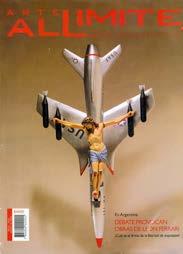
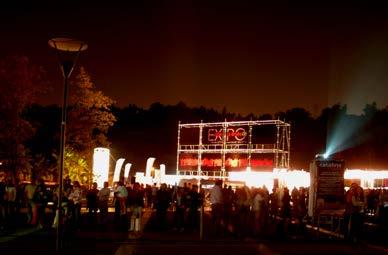
Quien escribe estas líneas, recuerda con gran estima la visita de Ana María Matthei a la ciudad de Buenos Aires a fines de 2004, poco tiempo después de que creara la revista. En ese momento, se exhibía una retrospectiva del artista León Ferrari (1921 - 2013), en el prestigioso Centro Cultural Recoleta. Allí se presentaba Civilización Occidental y Cristiana. Un objeto realizado en 1965, en repudio a la guerra de Vietnam, llamó la atención inmediata de Ana María: un Cristo de santería crucificado sobre la maqueta de un bombardero norteamericano F-105, cuyos materiales son óleo sobre yeso y plástico de 200 x 120 x 50 cm. Y con la intuición artística que siempre la caracterizó, al ver la obra de León, Ana María gritó: “Esta obra va a ser tapa de nuestra próxima revista”. Así salió.
Ante la fuerza que transmite la imagen, sin embargo, se encontró con una gran problemática: comenzaron a retirarse algunos auspiciantes y suscriptores. Les atraía la marca, no su contenido. Pero el tiempo le dio la razón a Ana María: En 2007, León Ferrari recibió el “León de Oro” al mejor artista en la 52ª Exposición Internacional de Arte Bienal de Venecia, Italia. En 2009, realizó una exposición en el Museo de Arte Moderno (MoMA) de Nueva York y en 2010, fue invitado de honor en Les Rencontres d’Arles, Francia, ocasión en la que presentó una gran retrospectiva de su obra. El diario estadounidense The New York Times lo nombró en aquel momento uno de los cinco artistas plásticos vivos más importantes del mundo.
Esta mirada que avizora, observa, vislumbra lo que está por venir, es una característica que unió a toda la familia Duch-Matthei en la concreción de los proyectos que surgían. La revista Arte Al Límite es codiciada por la calidad de artistas que publican sus trabajos, es deseada por los críticos para exponer sus ideas y admirada por los coleccionistas gracias a la información que reciben. Esta publicación convertida en un verdadero referente del arte latinoamericano, alcanza hoy la cantidad de 104 publicaciones.
Un nuevo museo
Para Ana María Matthei, la creación de un espacio que contenga la colección es la concreción de un sueño. Siempre lo pensó. Desde los primeros años en la galería y después con la revista.
In writing these lines, I fondly remember a visit Ana María paid me in Buenos Aires in 2004, a short time after she created the magazine. Back then, a retrospective of artist León Ferrari (1921-2013) was being shown at the prestigious Centro Cultural Recoleta, entitled Civilización Occidental y Cristiana . An object made in 1965, in condemnation of the Vietnam War, caught Ana Maria’s eye immediately: a 200 x 120 x 50 cm Santeria Christ crucified on the model of an American F-105 bomber, made of oil on plaster and plastic. With the artistic intuition that has always made Ana María stand out, when she saw León’s piece she shouted: “This piece is going to be the cover of our next magazine issue.” And so it was.
However, the strong visuals of the piece stirred up a big controversy: sponsors and members started pulling out; they were attracted to the brand, not the content. But Ana María was proven right in time: In 2007, León Ferrari was awarded with the Golden Lion to the best artist in the 52nd edition of the International Exhibition by the Venice Biennale, in Italy. In 2009, his work was exhibited at the Museum of Modern Art (MoMA) in New York, and in 2019 he was the guest of honor in Les Rencontres d’Arles, France, where a great retrospective of his artwork was shown. The New York Times named him one of the top 5 most influential artists in the world at the time.
This foresight, observation and vision of what is to come, is a characteristic that brought the entire Duch-Matthei family together in the realization of their future projects. The Arte Al Límite Magazine is cherished for the quality of the artists they publish, coveted by critics to convey their ideas, and admired by collectors due to the information they can get from it. This publication, turned a true reference of Latin American art, celebrates its 104th issue today.
For Ana María Matthei, creating a space for the collection is a dream come true. She always knew it. Since the early days of the gallery and then the magazine.
Portada edición N°12 Revista Arte Al Límite . Imágen de portada: León Ferrari. Imágen archivo AAl, Feria Internacional de Arte.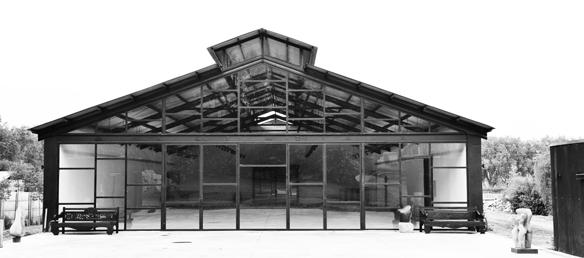
Las obras que adquiría la colección, debían permanecer juntas. Exhibirlas. Ese fue el compromiso que tomó con los artistas, las obras no se venden. También, tenía claro que no era Santiago el lugar de exhibición, sobre todo después de lo que le ocurrió en sus inicios como artista de regiones. Así, siempre intuitiva, encontró un amplio espacio en el valle del Aconcagua. La región de Valparaíso posee una cierta cantidad de ciudades chicas, rodeadas por viñedos imponentes. Esto hace que la ruta del vino sea un paseo concurrido por turistas. De esta manera la colección queda dentro de un camino elegido por sus bellezas naturales y ahora artísticas apenas a una hora de distancia de Santiago.
La curaduría del nuevo espacio es de la argentina Marisa Caicholo, quien vive en Los Ángeles, EE.UU. y conoce muy bien la colección. El acervo de Al Límite sorprenderá seguramente por la presentación tanto de obras nuevas como de artistas invitados. Un recorrido que comienza con algunas de las primeras obras que ingresaron a la colección hasta las de los últimos años. ¡Harto Trabajo! Exhibir las obras: pinturas, esculturas, instalaciones, dar acceso a nuestra colección de revistas y periódicos, programar los mejores videos sobre arte contemporáneo y así, como un museo vivo, desarrollar continuamente nuevos proyectos.
Una colección de arte en plena cordillera es sorprendente. ¿Cómo hace el visitante para separar la belleza de la naturaleza y vivenciar lo que propone el arte?
¡Que pregunta tan difícil! En muchos museos del mundo hay un entorno maravilloso que los rodea. Aquí también va a pasar esto. Los cerros, los pastizales y el paisaje van a estar siempre presentes aún estando dentro del Museo a través de las vidrieras. Para el ojo del visitante va a ser un diálogo constante entre arte y naturaleza. Salir para llegar a la sala de video caminando por una terraza de 350 mts2, ofrece contemplar también la maravillosa presencia de los árboles y el cielo. Vamos a distribuir esculturas al aire libre a escala “cordillerana”. Amplios espacios para recorrer y sorprenderse al encontrar piedras gigantescas junto a las esculturas “cuidadas” por altos árboles. Buscamos resaltar la diferencia con un espacio de la cultura en la ciudad,
The pieces she acquired for the collection had to remain together. They needed to be shown. That was the promise she made to artists, that the pieces would not be sold. She also knew that Santiago was not where they should be exhibited, especially after what happened at the beginning of her career as an artist from the regions. Thus, as intuitive as ever, she found a large space in the Aconcagua valley. The Valparaíso region is filled with countless small towns, surrounded by impressive vineyards. This is a very frequented area by tourists due to the wine route. This way, the collection will be in a tourist destination chosen because of its scenic and now artistic beauty, just an hour away from Santiago.
The curatorship of this new space is by Argentinean Marisa Caicholo, based in Los Angeles, US, who knows the collection very well. AAL’s collection will surely surprise with the presentation of new pieces and the guest artists. The tour starts with some of the first pieces that joined the collection and more recent artwork from up to the last couple of years. A lot of work! Exhibiting the pieces –paintings, sculptures, installations–, providing access to our collection of magazines and bullet-ins, planning the best videos on contemporary art and thus, like a living museum, constantly develop new projects.
A collection in the midst of the mountain range is surprising. How can viewers separate the beauty of nature and experience the artistic proposals?
What a hard question! Many museums around the world are surrounded by beautiful environments. This will also be the case. The mountains, the grasslands and the landscape will always be present, even within the glass doors of the museum. For visitors, there will be a constant conversation between art and nature. Exiting the museum to walk towards the video hall through a 350 m2 patio offers the opportunity to marvel at the wonderful presence of trees and the sky.
We will lay out sculptures outdoors at a “mountain range” scale. Vast spaces to roam around and be amazed to find gigantic stones next to the sculptures “guarded “ under tall trees. With this space, we seek to highlight the difference with urban

donde sabes lo que puedes encontrar. A menos de una hora de Santiago el público visitante tendrá la posibilidad de encontrar tanto artistas nacionales como internacionales. En el nuevo espacio “Arte Al Límite Museo”, todo va a ser distinto. Porque las obras exhibidas atraerán la mirada del espectador con tanta intensidad como el cambio de color en las montañas.
El museo es una gran sala con más de 500 m2 y una altura de 4 mts a los lados y 9 mts en el centro. Ese gran espacio estará dividido por paneles móviles. Esto nos va a permitir, en una exposición temporaria, por ejemplo, quitar los paneles y presentar la obra en planta única.
Este proyecto de abrir la colección al público provoca, en lo personal, una gran motivación ¿Cómo se sostiene la energía para hacer realidad un sueño de tantos años?
La respuesta está en el trabajo, en la perseverancia. Creyendo en el proyecto. Cuando uno hace lo que le gusta se vive con emoción: conocer a un artista, escucharlo hablar sobre su obra y después exhibirlas. Tengo muy presente cuando fue el momento en que entró cada obra a nuestro patrimonio. La obra no llega, sino que es seleccionada, elegida, pensada para la colección. Una colección que nació acompañada por toda la familia. Desde muy jóvenes mis hijos han participado en la galería, en la revista, con el periódico. Viajaron a una gran cantidad de ferias de arte, llevando para su difusión los últimos números de la revista y también para exhibir los libros que hemos editado, son cerca de 25. Entre todos conversamos sobre los criterios que debemos seguir para desarrollar nuestra marca y acrecentar la colección ¡Sola nunca hubiera podido! Siempre sentí el apoyo de mi marido, Ricardo, en unidad con toda la familia. Esto ha sido así desde los inicios y continúa con la familia unida hasta hoy. Esto es lo que me motiva, esto es lo que me gusta. Esto es lo que va a perdurar en el tiempo.
¡Bienvenidos a Arte Al Límite Colección y Museo!
cultures, excited about what you might find. Less than an hour way from Santiago, visitors will enjoy an encounter with both local and international artists. In this new space, “Arte Al Límite, the Museum,” everything will be different because all the exhibited pieces will captivate viewers as much as the changing colors of the mountains.
The museum is a big hall with over 500 m2 and a height of 4 m on the sides and 9 m in the center. The vast hall will be divided with movable panels, which will allow for rearrangement and removal of the panels in, for instance, a temporary exhibit where we want to show artwork in a single space.
This project of bringing the collection to the public is personally very motivating. How do you sustain the energy to make a longterm dream come true?
The answer is in the work, in perseverance. Believing in the project. When you do what you love, life is exciting: meeting artists, listening to them speak about their work and exhibiting that work. I remember the moment each piece came into our possession very clearly. Pieces do not just come, they are selected, chosen, and well-thought-out for the collection.
A collection that was born in the presence of the entire family. Since an early age, my children have participated in the gallery, the magazine, the bullet-in. They traveled to countless art fairs, took the latest issues of the magazine and the some-25 books we have published to disseminate them.
We all talk about the criteria we must follow to develop our brand and grow the collection. I couldn’t have done it on my own! I have always felt the support of my husband, Ricardo, along with the whole family. This started with the whole family united, and so it remains today. That is what motivates me, that is what I like. This is what will stand the test of time.
Welcome to Arte Al Límite, The Collection and Museum!
Por Elisa Massardo. Lic. en Historia y Estética (Chile)
Imágenes cortesía del artista.
Representado por Building Bridges Art Exchange.

 The planetary garden, 2023, vista de instalación. Museo de las artes, Universidad de Guadalajara, México.
The planetary garden, 2023, vista de instalación. Museo de las artes, Universidad de Guadalajara, México.
“Prefiero susurrar hundiéndome en las profundidades”
consideremos el espacio como una proyección mental de una visión, así podemos inmiscuirnos en el trabajo de Pietro Ruffo, quien prefiere: “hacer que la gente entre en una dimensión que plantea preguntas, en lugar de ofrecer certezas”. Así es como en The Planetary Garden expone una reflexión sobre el presente con obras de gran formato que invaden las habitaciones donde se encuentran, en la que busca mostrar los 250.000 años de historia que han moldeado este clima y la morfología de este planeta, y de nuestro intento por domesticarlo, siendo que “ya ha visto cientos de especies surgir, dominar y luego desaparecer”, explica.
Su pasión por la naturaleza y su entorno comenzó cuando estudiaba arquitectura, ahí realizó sus primeras exposiciones y al graduarse, el arte visual entró en su vida de forma innata y para quedarse. Probablemente las influencias de su abuelo, quien era artista abstracto; de su padre, arquitecto; y de su madre, diseñadora de vestuario, fueron cruciales para desarrollar en él esta vocación transdisciplinar donde podemos observar cómo el dibujo, el diseño, las nociones espaciales e, incluso, el diseño de vestuario, se mezclan en su obra como si fuera una danza contemporánea de múltiples intérpretes que forman un solo cuerpo.
Como si fuera poco, las bases del artista se encuentran en los conocimientos de pintura que adquirió de adolescente, en sus estudios de
“I prefer whisper by diving down into the depths”
let us consider space as a mental projection of a vision and only then can we explore Pietro Ruffo’s work, who prefers to: “make people enter a dimension that asks questions, rather than provide certainties”. In The Planetary Garden, the artist presents large-scale pieces that reflect on the present. The pieces seek to evince the 250,000 years of history that have shaped the climate and morphology of the planet, as well as our attempts to domesticate it, despite the planet already having witnessed “hundreds of species emerge, dominate, and then disappear,” as the artist points out.
His love for nature and his environment started when he was studying architecture and had his first exhibitions. When he graduated, visual arts came to his life innately and to stay. The influence of his grandfather, an abstract artist; his father, an architect; and his mother, a fashion designer; were crucial for him to develop a cross-discipline calling where drawing, design, spatial awareness, and even fashion design intertwine in his work, as if in a contemporary dance of several interpreters shaping one body.
The foundations on which the artist stands lie in the knowledge of painting that he acquired during his study of architecture,
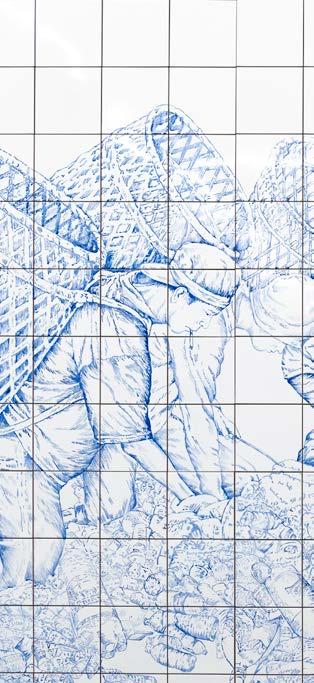

arquitectura que le permiten comprender la ciudad desde la sociedad que la conforma; además, realizó una investigación sobre Isaiah Berlin, en la Universidad de Columbia, cuyos análisis sobre la Guerra Fría y las repercusiones de la libertad americana calaron profundamente en el artista, al punto de que: “dio lugar a una serie de obras que investigaban el concepto de libertad, un tema que he investigado durante muchos años y que me llevó a diferentes partes del mundo para investigar cómo se percibe este tema”. Desde acá comenzamos una entrevista exclusiva que nos permite conocer más los conceptos que desarrolla a través de sus múltiples, inmersivas e impresionantes obras visuales:
¿Cómo definirías la libertad y la dignidad del individuo? Y, ¿por qué son tan importantes en tu trabajo?
La importancia de la palabra libertad radica precisamente en el hecho de que no puede definirse. Esta fue la gran trampa del siglo XX que destacó Berlin, cuando los dirigentes políticos pusieron en práctica definiciones de libertad formuladas por filósofos como Rousseau o Fichte, para crear regímenes autoritarios, imponiendo al pueblo una idea inequívoca de libertad que, de hecho, la invalidaba por completo. El término dignidad está estrechamente relacionado. Creo que Kahlil Gibran expresó claramente en su poema de 1923 On Freedom que la
which allowed him to understand cities from the perspective of the society that shapes them. Furthermore, he completed a research on Isaiah Berlin at Columbia University, whose analysis of the Cold War and its repercussions on American freedom deeply resonated with the artist, to the point that the inspiration: “gave rise to a series of works, which investigated the concept of freedom, an issue that I have researched for many years and which took me to different parts of the world to investigate how it is perceived”. In the exclusive interview that follows, we learn more about the concepts he develops through his diverse, immersive, and impressive visual artwork:
How would you define the freedom and dignity of an individual?
Why are these concepts important for your work?
The importance of the word “freedom” lies precisely in the fact that it cannot be defined. This was the great pitfall of the twentieth century highlighted by Berlin, when political leaders put into practice definitions of freedom formulated by philosophers such as Rousseau or Fichte, in order to create authoritarian regimes, imposing on the people an unequivocal idea of freedom that, in fact, completely invalidated it.
The term dignity is closely related. I think Kahlil Gibran made it

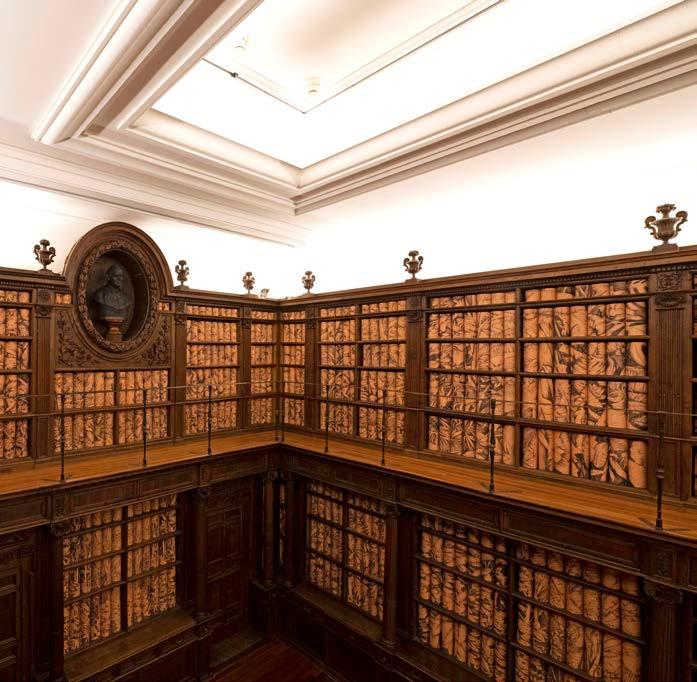 The clearest way, 2021, vista de instalación. Biblioteca Apostólica Vaticana, Vaticano. Foto: Emanuele Angelini.
The clearest way, 2021, vista de instalación. Biblioteca Apostólica Vaticana, Vaticano. Foto: Emanuele Angelini.
libertad debe buscarse dentro de cada uno de nosotros antes de exigirla externamente, pero es un ejercicio agotador, por lo que a menudo nos parece más adecuado salir a las calles.
En una entrevista anterior dijiste que por primera vez gritaste en vez de susurrar, ¿podrías explicarme la diferencia y qué temas consideras necesario gritar al mundo?
Como actitud prefiero estudiar y susurrar sumergiéndome en las profundidades de los asuntos. Creo que gritar es un esfuerzo inútil que se queda en la superficie. La historia siempre ha sido para mí un filtro para comprender el mundo que me rodea, una distancia que pongo entre mí y la complejidad de los acontecimientos cotidianos.
En 2020 creé una exposición titulada Tidal Wave pintando grandes paredes de azulejos que representaban escenas de la vida cotidiana, desde las migraciones hasta las manifestaciones de Fridays For Future. En estas últimas, los jóvenes que tomaron las plazas de todo el mundo gritaron su disconformidad y su entusiasmo, y su proyección de un mundo diferente me resulta fascinante.
¿Cuál es la importancia de los mapas en tus obras?, ¿de dónde proviene esta idea de trabajar con ellos?
clear with his 1923 poem On Freedom that liberty should be sought within each of us before demanding it externally, but this is a tiring exercise, and, thus, we often find it more fitting to take to the streets.
In a previous interview, you said that you shouted for the first time instead of whispering. Could you explain the difference? What topics do you consider necessary to shout to the world? As an attitude I prefer, to study and whisper by diving down into the depths of issues. I think shouting is a futile effort that remains on the surface. History has always been a filter for me to understand the world around me, a distance I put between me and the complexity of the daily happenings.
In 2020 I created an exhibition entitled Tidal Wave by painting large walls of tiles depicting scenes of daily life, from migrations to Fridays For Future demonstrations. In the latter, young people who took to the squares around the world shouted their dissent and their enthusiasm, and their projection of a different world fascinates me.
What importance do maps hold in your work? Where did the idea of working with them come from?

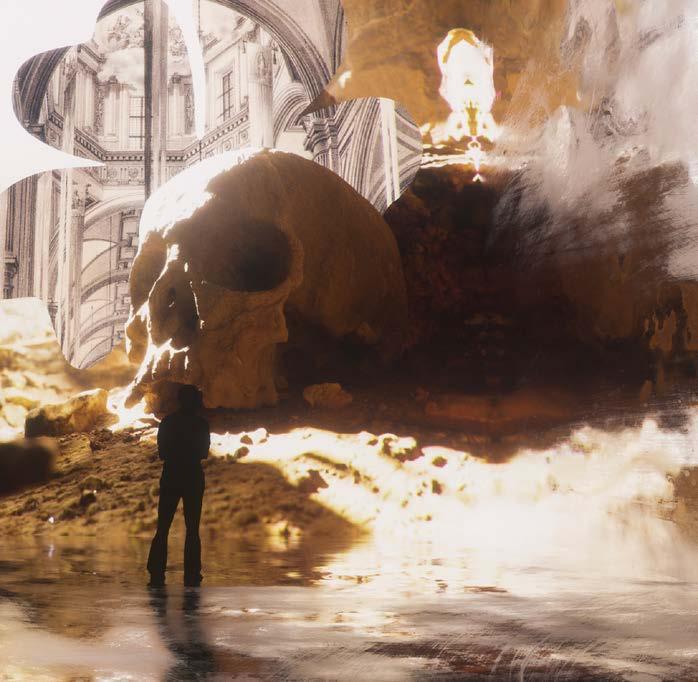 Noruwei and Pietro Ruffo, The planetary garden, 2023, vista de instalación, video 4:27 minutos. Diverse Los Angeles, Estados Unidos.
Noruwei and Pietro Ruffo, The planetary garden, 2023, vista de instalación, video 4:27 minutos. Diverse Los Angeles, Estados Unidos.
Lo que me intriga de los mapas es que representan una herramienta subjetiva que dependen de quién los esboza y, aún más importante, de quién los encarga. Leer mapas antiguos revela las tensiones y ambiciones de distintos pueblos. Cada mapa es un intento de dominar la inmensidad de un mundo que nos domina; es como si mirar un mapa nos situara en una posición de otro mundo que no nos corresponde controlar pero que nos halaga.
¿Ves un vínculo entre los mapas y las fronteras? Entendiendo que en tu obra también has trabajado el tema migratorio que ha sido tan conflictivo para Europa en la última década.
Somos la única especie que se impide migrar. Nos imponemos fronteras que no queremos que crucen los demás, aunque reivindiquemos el derecho a cruzarlas a nuestro antojo. Somos una de las especies más jóvenes del planeta, e intentamos controlar la migración con escaso éxito, trazando fronteras y definiendo enemigos que viven más allá de la misma.
Sin duda, necesitamos mucho más tiempo para encontrar la armonía con el mundo que nos rodea y con las personas que lo habitan. Nuestro frenesí es el propio de un niño muy joven.
¿Consideras que se pueden crear mundos posibles?, ¿cómo?
Creo que vivimos en el mundo más hermoso posible. No necesitamos crear otros, sino quizás cambiar nuestra percepción de este.
What fascinates me about maps is that they are a subjective tool that depends on those who draw them, and, more importantly, on those who commission them. Reading historical maps reveals the tensions and ambitions of different peoples. Each map is an attempt to dominate the immensity of a world that dominates us; it is as if looking at a map puts us in an otherworldly position that is not ours to command but that flatters us.
Taking into account your work on migration issues, which have been so troublesome for Europe over the last decade, do you see a link between maps and borders?
We are the only species that prevents itself from migrating. We impose borders on ourselves that we do not want others to cross, even though we claim the right to cross them at our whim. We are one of the youngest species on this planet, and we try to control migration with limited success, drawing borders and defining enemies who live beyond the border. We certainly need much more time to find harmony with the world around us and with the people who live in it. Our frenzy is typical of a very young boy.
Do you think that possible worlds can be created? How?
I think that what we live in is the most beautiful world possible, we don’t need to create others, perhaps to change our perception on this one.
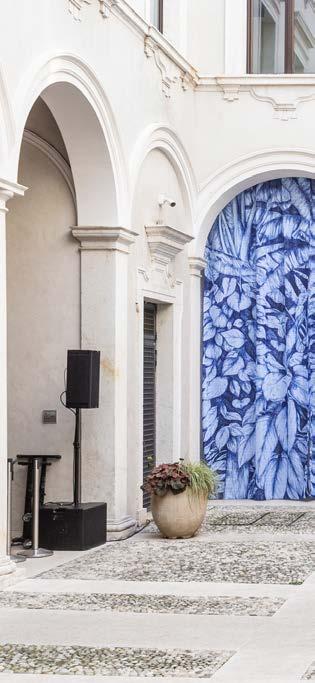
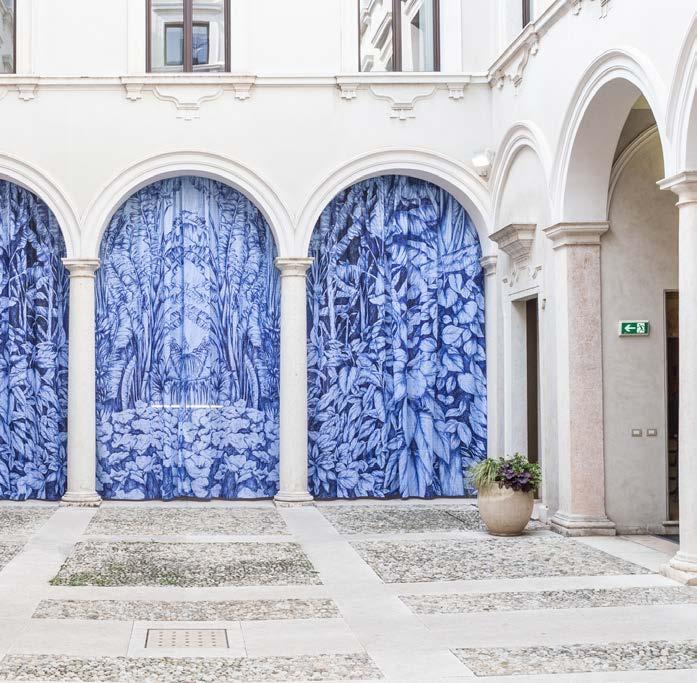
Por Karla Siguelnitzky. Teórica del arte (Chile)
Imágenes cortesía del artista.

Brasil
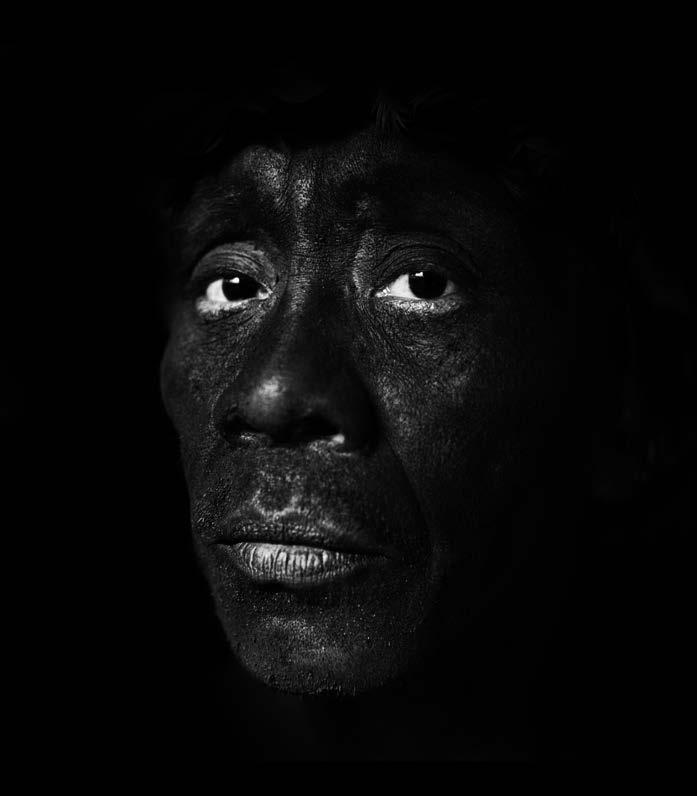
La resistencia de la Amazonía a través del lente
The resilience of the Amazon through a lens
los sesgos sociales fraccionan e instauran una estructura jerárquica en el orden de la sociedad. Potencian el surgimiento de arquetipos y cánones que delimitan nuestro entendimiento sobre la multiplicidad de pueblos y etnias. Esta homogeneización ha obstaculizado la creación de una perspectiva más amplia que logre integrar la diversidad de razas. La obra de Rodrigo Petrella, llama justamente a reflexionar sobre esta temática mediante exquisitas composiciones, en las que el autor ejerce tanto el rol de artista como de testigo y etnógrafo, creando imágenes con un alto contenido crítico y artístico.
La carrera de Petrella se sustenta en varios años de investigación sobre las comunidades indígenas de la Amazonía brasileña. Sus fotografías revelan de manera sutil y cercana diversas prácticas y estilos de vida de dichas comunidades. Su obra nos invita a ser parte de esta realidad muchas veces opacada por el sistema occidental imperante, asimismo nos llama a ser conscientes del riesgo en que estas comunidades están sumidas debido al incesante avance del sistema neoliberal que antepone un crecimiento económico en vez de preservar, cultivar y conservar su ecosistema.
El surgimiento de las ciudades modernas ha desplazado y alterado la intrínseca relación entre naturaleza e individuo. Además, la sociedad actual se encuentra subyugada a constantes avances tecnológicos, olvidando el origen de nuestra existencia, ¿cómo crees que difiere la percepción que tenemos sobre la naturaleza frente a esta situación? Creo que gran parte de esto se debe a la revolución industrial, cuyo proyecto político-económico provocó un giro tremendo en la percepción del mundo y por encima de todo, en la relación con el tiempo de las cosas: time is money! Dio origen a una fiebre generalizada, una búsqueda del tesoro por minerales, fuerza del trabajo humano, recursos biológicos, guerras, fuentes de energía y operaciones de extracción y explotación a un nivel de intensidad nunca experimentado en la historia, tan grande que ha reconfigurado grandes partes del territorio global, sobre todo las ciudades.
Enormes volúmenes de riqueza han emergido y han sido transformados en otra cosa con el potencial de cambiar toda una geografía, fronteras, relaciones sociales y alianzas entre países. Todo esto, en cierto modo, ocurrió y sigue ocurriendo de forma violenta, con tal exuberancia y velocidad. Las sociedades se encuentran en un estado traumático, sin embargo, siguen buscando respuestas a este sentimiento de desplazamiento y alienación al mundo/ tiempo llamado natural.
Hay muchas percepciones, muchos intentos de explicar. Es un caleidoscopio de ideas y teorías desde puntos de vista muy distintos, pero todas se enfrentan a una realidad disimulada, compleja, cambiante y ante todo, opaca. Quizás, en otras palabras: el paraíso tiene muchas salidas, pero ninguna entrada.
s ocial prejudice establishes and divides the hierarchical structure of societal order. It encourages the formation of archetypes and standards that limit our understanding of the diversity of peoples and ethnicities. The homogenization brought about by this bias has prevented the establishment of a broader perspective that successfully integrates racial diversity. Rodrigo Petrella’s work urges us to ponder this very topic with his exquisite compositions, where he plays the role of artist, witness and ethnographer, creating images rich in critical and artistic content.
Petrella’s career has been built on the foundations of several years of research on the indigenous communities in the Brazilian Amazon. His photographs subtly and intimately unveil the many practices and lifestyles of these communities. His work invites us to partake in this reality, so often overshadowed in the reining Western system. Likewise, it raises awareness of the risks these communities face due to the relentless advancement of the neoliberal system, which prioritizes economic growth instead of preserving, cultivating, and protecting their ecosystem.
The advent of modern cities has displaced and altered the intrinsic relationship between nature and individuals. Current society is also subject to constant technological advancements that cause us to forget the roots of our existence. How do you think this has impacted our perception of nature?
I think most of this is attributable to the Industrial Revolution and its political-economical project that brought about a tremendous shift in our perception of the world and, above all, of our relationship with time: time is money! This created a widespread feverish state, a quest to find treasured minerals, human labor, biological resources, wars, and a historically unprecedented exploitation of energy sources that is so large-scale that it has reconfigured large portions of the global territory, especially cities.
Huge volumes of riches have emerged and been transformed into something with the potential to change the whole of geography, borders, foreign affairs, and alliances between countries. In a sense, all this happened and continues happening in a violent, exuberant, and rapid fashion. These societies are in a state of trauma, but they continue to seek answers to these feelings of displacement and isolation from the so-called natural world/time.
There are many perceptions and many attempts to explain this situation. There is a kaleidoscope of ideas and theories from very different points of view, all facing a hidden, complex, changing, and, above all else, non-transparent reality.
Perhaps, in other words, paradise has many exits but no entrances.

El canon occidental ejerce un ideal de belleza que limita la inclusión de otredades. Estos ideales producen arquetipos de individuos seriados y categorizan de forma jerárquica el origen y raza. Al respecto, y teniendo en cuenta tu trayectoria como fotógrafo de moda, ¿cómo percibes la convivencia de estas dos realidades?, ¿crees que ha surgido tanto desde el arte como de la sociedad una perspectiva más inclusiva referente a la belleza?
What ever happened to beauty? Gone with the wind Me parece que actualmente, con la explosión de las redes sociales y el alcance de los movimientos políticos descentralizados (e.g. #MeToo, #BlackLivesMatter), que promueven programas ideológicos instantáneos a escala mundial a través de Internet, quedó claro que lo que antes se catalogaba como ‘canon occidental’ era un proyecto cultural estrecho, pensado por unos pocos y, probablemente, para unos pocos.
Basándome en esto, me pregunto: ¿dónde se queda la China, la India, para solo mencionar dos países, en esta historia?
Es posible que esta paleta de tonos de piel demasiado pálida para el momento actual, prejuiciosa en sus orígenes, se haya visto finalmente como algo insuficiente, corto en su alcance para servir de máscara a la representación general de las muchas alteridades emergentes.
Puedo señalar que, por un lado, la respuesta vino a través de la hipernormalización del consumo de la moda, por la globalización de las muchas marcas de lujo que han tomado la iniciativa de ensalzar el carácter universal del dinero y del buen gusto. Pero, ¿no sería este un nuevo hombre serializado?
Por otro lado, algo más surgió. Un canon alternativo de origen difuso y bordes indefinidos. Algo un tanto provinciano, de alguien que se vio amenazado por las muchas exigencias feministas, poscoloniales y por un nuevo mundo compuesto por nuevas jerarquías en los estratos de la pirámide social. Este sujeto también reaccionó, aunque en forma de prejuicios y teorías conspiratorias (e.g. fake news -QAnon), hechas de viejas ideas y nacionalismos, donde los espejos estéticos son seguros y la imagen reflejada no causa incomodidad.
La construcción de un relato vivo y auténtico se funda en el carácter íntimo y profundo de la representación, ¿cómo logras establecer dicha intimidad y qué factores son fundamentales para su construcción y desarrollo?
Este me parece el quid de la cuestión: ¿quién habla?
Más allá de intentar establecer una intimidad, aunque a veces es necesario mantener una distancia, en general, procuro y trato de dialogar, sensibilizar y construir los dispositivos narrativos que desarrolla la obra junto con los propios sujetos. Sin embargo, cada serie es un universo diferente y malheureusement no existe una fórmula mágica. Todo momento histórico tiene su propia contingencia, urgencia y necesidades específicas que moldean y dan forma al trabajo.
Western culture fosters an ideal of beauty that limits the inclusion of otherness. These ideals create archetypes of replicated individuals and hierarchically categorize origin and race. Bearing in mind your experience as a fashion photographer, how do you perceive the coexistence of these two realities? Do you think a more inclusive perspective of beauty has emerged both in art and society?
What ever happened to beauty? Gone with the wind I feel that now, with the explosion of social media and the scope of decentralized political movements (e.g. #MeToo, #BlackLivesMatter) that promote instant ideological causes on a global scale through the Internet, it has become clear that what was previously called “Western ideals” were a narrow cultural project, conceived by and for a select few. Based on this, I wonder: Where do China or India, just to name two countries, fall into this history?
Possibly, these currently in vogue pale skin tones, which are prejudicial from their inception, have finally been seen as insufficient, as falling short in their scope to serve as the mask of general representation in the diversity of emerging otherness.
I can note that the response came from the hypernormalization of fashion consumption and the globalization of luxury brands that have taken the initiative to promote the universal nature of money and good taste. But wouldn’t this be a new form of a replicated individual?
Something else emerged as well: an alternative standard with vague origins and blurred lines. This somewhat provincial new standard stemmed from feeling threatened by the demands of feminists, post-colonialism and a world order made up of new hierarchies in the social class pyramid. Although this new ambiguous standard gave rise to prejudice and conspiracy theories (e.g. fake news, QAnon) made up of old ideas and nationalist feelings, it also made it so that when holding up a mirror to its image, it felt safe and did not cause any discomfort.
The construction of a sharp and authentic narrative is based on the intimate and deep nature of representation. How do you manage to establish this intimacy? What factors are fundamental in building and developing it?
To me, the crux of matter is: whose narrative is it?
Beyond trying to force intimacy, I generally try to make sure to engage in a conversation, become more aware, and craft the narrative devices to develop pieces alongside the subjects themselves, even though it is sometimes necessary to keep a distance. However, every series is a different universe and, unfortunately, there is no magic formula. Every historical moment has its own specific impact, urgency, and needs that mold and shape my work.


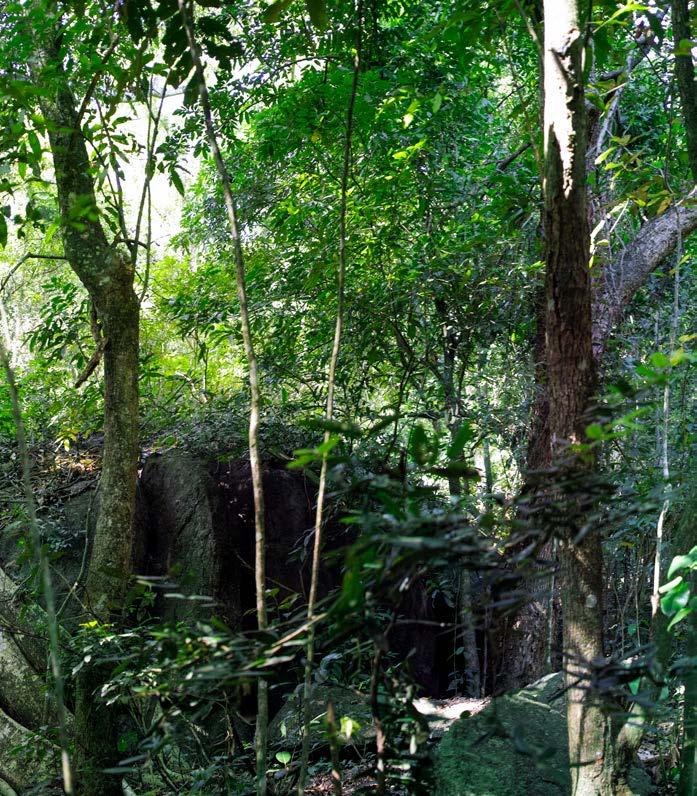
Yo no creo, además, que pueda haber un sujeto y un objeto ficticiamente separados por un aparato mecánico llamado cámara. Siempre hay una persona inmersa en un grupo de personas, interactuando constantemente y viéndose afectada dentro de todo este sistema. Como campos de fuerza procedentes de muchos cuerpos que interfieren entre sí, donde unas veces se anulan y otras se intensifican, mediaciones que ocurren al azar y dan origen a la estructura íntima y única de cada obra.
Incorporó las causalidades y posibilidades por muy contrarias que sean o que se presenten, ya que apuntan a soluciones estéticas válidas. De alguna manera intento exponer el proceso que se convierte en parte de la obra, pues la obra es también un proceso abierto, un proceso que busca la conciencia.
El poder crítico y la facultad discursiva de las imágenes impulsa y fortalece el rol del artista como activista. La representación de minorías e ideales opacados por el sistema imperante es clave respecto al factor de cambio que ejerce la cultura y las artes, ¿crees que como artista debes asumir un rol activo y contestatario sobre las problemáticas actuales?
Desde una perspectiva personal, que al cabo de años tomó forma, asumí que había hecho una investigación sistemática en cuestiones relevantes, de urgencia perturbadora, al menos a mis ojos, como testigo en este amanecer planetario del diseño industrial de residuos contaminados, de relaves que producen cambios ecológicos en los biomas y que han servido y siguen sirviendo a estas empresas. A través de este trabajo comprendí que este modelo sirve para ilustrar la actual forma de ocupación de la Amazonía: el encuentro entre la motosierra y el bosque.
En estos sitios reprimidos del panorama mental y visual común, como los fantasmas, tienden a regresar transfigurados, es casi un experimento científico, heterodoxo, que, tras coagularse, da vida a un nuevo paisaje, Frankenstein. Aunque insostenible desde el punto de vista medioambiental, de los pueblos nativos que por ahí circulan, esta realidad fluida y fluctuante que no está basada en lo local, en la comunidad y que no es propia de las necesidades físicas de automantenimiento y equilibrio de la tierra, sigue.
No sé los otros, pero mis obras pretenden construir una imagen del futuro que se materializa en una maqueta del pasado. Una especie de pastiche de paisajes destruidos, montañas de basura, agentes contaminantes y personas que nunca imaginaron ni se preocuparon por cómo sería el futuro actual.
Besides, I do not think subject and object could be fictitiously separated by the mechanical device we call a camera. People are always among others, constantly interacting with and being affected within the system. Just like the force fields of different bodies interact with one another, sometimes canceling each other out, other times becoming stronger, these mediations happen at random and they create the intimate and unique structure of each piece.
I incorporate all coincidences and possibilities, even if they seem contradictory, because aim at valid aesthetic solutions. I somewhat try to evince the process that is part of every piece, as it is also an open process, a process that seeks awareness.
The critical and narrative power of images boosts and strengthens the role of artists as activists. Representation of minorities and ideals overshadowed by the ruling system is key in culture and art as agents of change. Do you think as an artist you must assume an active and contesting role towards current issues?
From a very personal perspective, which I have shaped over some years, I felt I have conducted systematical research on relevant issues of a disturbingly pressing nature, at least in my eyes, I have been a witness to the dawn of mass-produced contaminated waste, mine tailings that affect the environment of biomes and that have worked and continue to work for the benefit of some companies. Through this work, I understood that this model illustrates the current state of occupation of the Amazon: the encounter between chainsaws and forest.
In the repressed areas of the common mental and visual landscape, these places are transfigured upon their return, like ghosts, and almost like a heterodox scientific experiment that, after coalescing, brings a new landscape to life, a Frankenstein.
Although unsustainable from an environmental standpoint and from the viewpoint of native peoples that inhabit these places, this fluid and fluctuating reality prevails, even if it fails to consider local or community concerns and it is not conducive to the Earth’s physical needs of self-sustainability and balance.
I do not know about other artists, but my work aims to build an image of the future that materializes through a mock-up of the past: a sort of hodgepodge of deconstructed landscapes, mountains of waste, pollutants, and people that never imagined or worried about what the future would hold.
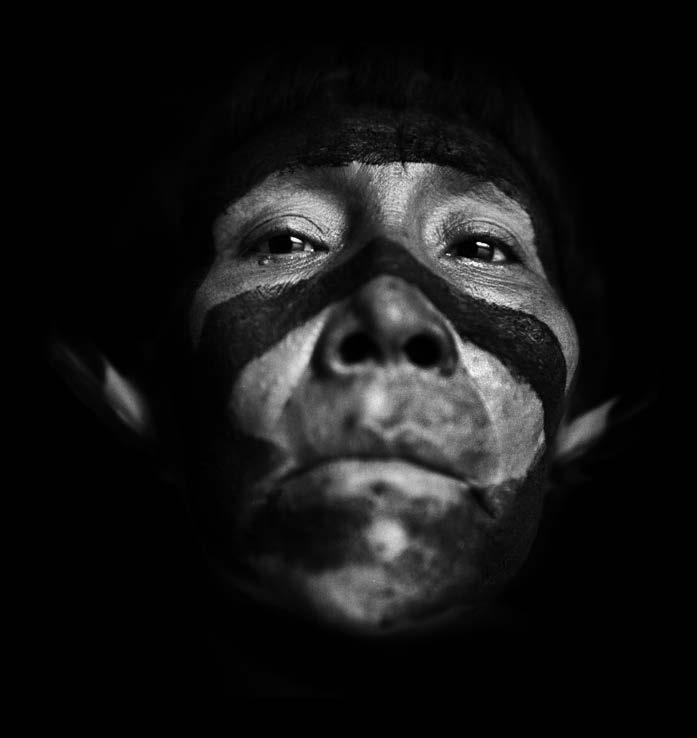
Por Ricardo Rojas Behm. Escritor y Crítico (Chile).
Imágenes cortesía del artista.

tantas veces nos vemos obnubilados por un flashazo de nombres que resplandecen en nuestra memoria como reconocidos. Pero, ese anquilosamiento instalado a perpetuidad no hace otra cosa que demostrarnos que en paralelo existe un número importante de artistas que viajan por otro carril, que no se entrega a lo comercial, lo complaciente, lo tradicional, lo esperado, o lo conformista, y no escatiman esfuerzos por encontrar múltiples formas de abordar el arte, legitimando nuevos códigos que modifiquen el orden de las cosas. En ese escenario está Muu Blanco, quien recuerda que todo responde a una serie de motivaciones que lo impulsaron a ser un artista multidisciplinario. Desde su bisabuelo, el escritor y poeta Udón Pérez, a ser nieto de Antonio Angulo Luzardo, primer artista abstracto de su país. Por eso realizamos una entrevista exclusiva, para abordar más sobre su obra y sus motivaciones.
¿Qué otros referentes o lecturas, músicas y paisajes, gatillaron ese motivación inicial?
El conocer la filosofía punk en los 80’s por medio de las letras de las bandas británicas, a la vez de descubrir las vanguardias del siglo XX, el futurismo de Luigi Russolo, Filippo Tommaso Marinetti, los Dadaístas Hugo Ball, Tristán Tzara, Max Ernst, Marcel Duchamp y los situacionistas Rosa Luxemburgo y Georg Lukács,y por supuesto el Arte sonoro de John Cage (FLUXUS) y muchos más de una extensa lista. Aunque, vivir en Caracas en esa época de los 90’s con 5 museos, la cinemateca, el movimiento musical en vivo y mi contexto familiar, su biblioteca ecléctica, la libertad de pensar y hacer cosas sin un sentido definido, ver por la ventana y estar en otra dimensión mental, del disfrute de las posibilidades creativas sin límite.
En ese sin o al límite, ¿Cómo confluyen el dada, el pop o la filosofía punk en ese hacer lo que quieres, hacer sin estar informado o deconstruir y volver a desarrollar?
Es algo natural, al comienzo era un joven desinformado, pero para el 2000 ya estaba inmerso en esta forma de producción de arte, que yo denomino ‘sistema de representación de arte contemporáneo, práctico y crítico’. Es una manera de creación muy sencilla que se va complejizando según el río en que me introduzca, viene de las conversaciones, de internet (imágenes-música-películas-lecturas), de su algoritmo que no solo te propone productos, sino temas que escuchamos cotidianamente; lo mismo sucede en YouTube y en servidores de música donde paso muchas horas al día recopilando cascadas investigativas que vienen de situaciones vividas a diario. Esos significativos descubrimientos son, para mí, la manifestación del arte que se divide en muchos tentáculos como medios expresivos.
Entrecruzando esos tentáculos ¿Cuál es el nexo entre la escuelita Federico Brandt en San Bernardino, y tu estudio de Coconut Grove?
Estudios libres, donde comencé por la historia del arte contemporáneo
we are often blinded by the bright flashes of names that light up our memory in familiarity. However, this deeply rooted stagnation only proves there is a significant number of artists who tread a different path and do not surrender to commercialization, complacency, tradition, expectations or conformity. These artists spare no effort in finding different methods of approaching art, thus legitimizing new codes that shift the established order. This is the stage where Muu Blanco operates, remembering that everything answers the myriad of motivations that led him to become a multi-disciplinary artist. He is the great-grandchild of writer and poet Udón Pérez and the grandchild of Antonio Angulo Luzardo, the first abstract artist in his country. In this exclusive interview, we address his work and his motivations.
What references, texts, music, and landscapes led to that initial motivation?
Learning about 80s punk ideology through British band lyrics, while discovering 20th-century avant-garde; Luigi Russolo’s and Filippo Tommaso Marinetti’s futurism; Dadaists Hugo Ball, Tristan Tzara, Max Ernst, and Marcel Duchamp; situationists Rosa Luxemburg and György Lukács; and of course, sound art by John Cage (FLUXUS); as well as many others in a lengthy list. Living in Caracas in the 90s also influenced me. Back then, it had 5 museums and a bustling film and live music scene. My family context played a role as well, with its eclectic library, freedom of thought and of doing things without a specific purpose, looking out the window and being in a different mental space, and the enjoyment of creative possibilities without any limits.
In that creativity with or without limits, how do Dadaism, pop and punk ideology come together in doing what you want, creating while uninformed or deconstructing and redeveloping?
It is something natural. I was uninformed when I was young, but by 2000 I was already very much involved in that way of creating art, which I call a “critical and practical contemporary art representation system”. It is a very simple method of creation that becomes more complex depending on the waters I’m exploring. It comes from conversations, images, music, films and texts from the Internet and its algorithm that not only serves products, but also topics from everyday life. The same thing happens with YouTube, where I spend many hours in the day compiling waves of research stemming from daily situations. For me, these significant discoveries are artistic manifestations divided into the many tentacles of the means of expression.
Intertwining those tentacles, what is the link between the Federico Brandt Institute in San Bernardino and your Coconut Grove studio?
I started studying the history of contemporary art on my own, and from



de allí al dibujo, que fue un corrientazo que me despertó de nuevo el espíritu creador que desde los 12 años abandoné por andar vagando por Caracas con la banda de Ska “Desorden público”, luego 30 años de libertad creativa de mano de mi mejor amiga -la computadora portátil-, y en Miami, desde hace 9 años, he tenido 3 espacios de creación, uno público “Espacio Saltamantis”; y dos privados: mi casa estudio, en Design District, y ahora un garage bunker en Coconut Grove, donde estoy más activo que nunca conceptualmente para armar los próximos portaviones con lo que atacaré el mundo del arte desde el “Pantano de las Vanidades”, Miami City, mi nuevo hogar, ya que desde octubre del 2023 soy naturalizado estadounidense.
Existen abstracciones paisajísticas, torsiones de la realidad y proyectos sonoros ¿Hasta qué punto eso sigue siendo tu motor?
Las abstracciones paisajísticas están presentes desde el 2002, este mes edité mi cuarto foto libro y es de los primeros 10 años de esta investigación desde su nacimiento en las calles de Caracas hasta el 2012, cuando cerré ese ciclo en mi ciudad natal para emigrar. Con respecto al paisaje sonoro tengo archivos de muchas locaciones, las más recientes publicaciones sonoras son una serie de 4 sencillos de ambiente sonoro y flauta grabado en vivo en un jardín del centro cultural la Trinidad (Caracas, 2013) Nueva Poética Venezolana Vol’s 1 - 2 - 3 - 4 (NPV), a nivel global en el servidor de música de tu preferencia. Y, hace unas semanas, fui invitado a presentar una instalación sonora en la primera Doral Internacional Art Fair (City of Doral, Florida), donde realicé una curaduría de historia del arte sonoro desde el futurismo al paisaje sonoro con 100 años de historia, en 5 módulos, donde puedes escuchar 59 tracks de unos 30 artistas representantes del sonido en el arte.
¿Cuál es el concepto que moviliza tu trabajo como artista venezolano fuera de tu país?
Desde hace nueve años no dejo de editar y exponer todas las investigaciones maduradas de mis primeros 30 años de carrera artística en Venezuela, es una carga personal muy presente, la mayoría de mis investigaciones vienen desde ahí y tú pregunta me lo pone enfrente, incluso mi primera investigación que no tiene que ver con ser venezolano, ya que es un trabajo documental del 2020-2022, es mi supervivencia en este periodo de la pandemia y sus años siguientes, pero lo que busco es realizar arte centrado en el aquí y el ahora, sin dejar de lado mis referencias históricas personales. No soy un artista que tiene un arraigo folk venezolano, aunque sí estoy influenciado por pensadores y por su arte contemporáneo. Es lamentable, pero el perfil de artista venezolano no me favorece, eso es lo que me ha tocado vivir aquí en USA.
De hecho, el año entrante estoy llevando a Madrid un video que es una metáfora de cómo los artistas venezolanos estamos atrapados en el mercado del arte abstracto geométrico, si no estás en esa línea difícilmente tienes éxito como venezolano en el exterior. Ese video es una loop infinito de mi cuerpo caminando hacia adelante y hacia atrás dentro de una obra de Julio Le Parc y una vectorización traslúcida de una pieza de Jesús Rafael Soto.
there I began drawing. That rush reawakened my creative spirit, which I had abandoned at the age of 12 to wander around Caracas with the Ska band “Desorden Público”. From there, it has been 30 years of creative freedom alongside my best friend –the laptop. In Miami, I have had 3 spaces of creation over the last 9 years: one public, Espacio Saltamantis, and two private ones, my home studio in the Design District, and now a garage bunker in Coconut Grove, where I am more conceptually active than ever. This has led me to assemble the next aircraft carriers with which I plan to attack the art world from “Swamp of Vanities,” or Miami, which is my new home, as I have been an American citizen since October 2023.
Your work has featured abstract landscapes, reality distortions, and sound projects. To what extent are those still your driving force?
Abstract landscapes have been present in my work since 2002. This month, I edited my fourth picture book encompassing 10 years of research, from its inception on the streets of Caracas to 2012, when I closed that chapter in my native land to migrate. In regards to soundscapes, I have files from many places. My most recent sound publications are a series of 4 ambient sound singles with flutes recorded live at the garden of La Trinidad Culture Center (Caracas, 2013) entitled Nueva Poética Venezolana Vol. 1, 2, 3, 4 (NPV), available worldwide in your favorite music streaming platform. A few weeks ago, I was invited to exhibit a sound installation in the first edition of the Doral International Art Fair (Doral, Florida). I curated pieces from 100 years of the history of sound art, from futurism to soundscapes, and arranged them in 5 modules, where listeners can hear 59 tracks by around 30 representative artists.
What is the concept that drives your work as a Venezuelan artist away from your country?
For 9 years, I have not stopped editing and exhibiting all my fully developed work from the first 30 years of my career in Venezuela. This is a very present personal load; most of my research comes from there and your question makes me face it. In fact, my very first research project that has nothing to do with being Venezuelan is a documentary work from 2020-2022 addressing my survival of the pandemic and the years that followed. In it, I aim to create art focused on the here and now, without casting aside my personal and historic references. I am not an artist who is rooted in Venezuelan folk, but I am influenced by its thinkers and contemporary art. Unfortunately, being labeled as a Venezuelan artist does not work in my favor, that is what I have experienced here in the USA.
As a matter of fact, next year I will be taking a video to Madrid that serves as a metaphor of how Venezuelan artists are trapped in the geometric art market. If you do not fall into that category, you can seldom succeed as a Venezuelan abroad. The video is an infinite loop of my body walking forwards and backwards inside a piece by Julio Le Parc and a translucent rendering of a piece by Jesús Rafael Soto.
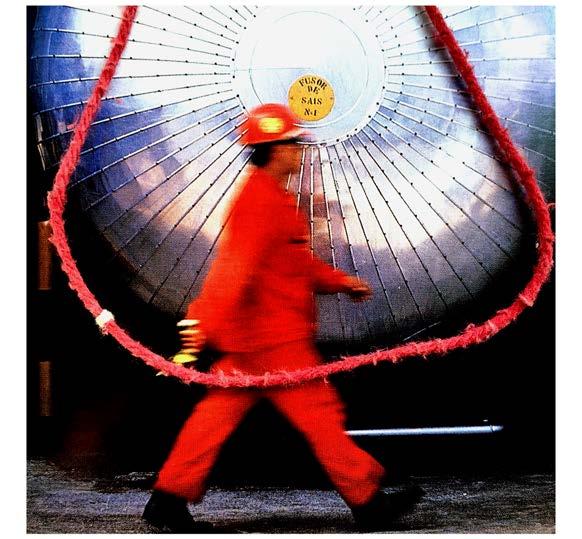
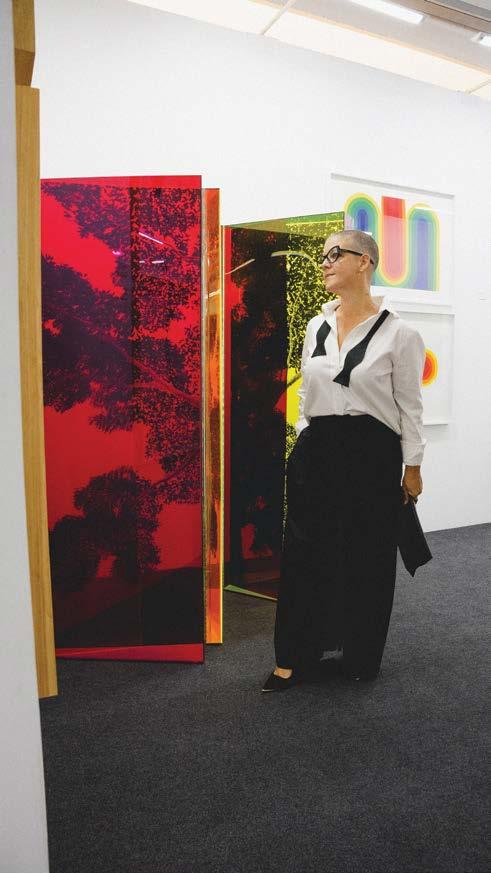
La feria es un punto de encuentro anual clave en el mundo del arte moderno y contemporáneo latinoamericano. Pinta PArC exhibe y potencia el intercambio cultural y la promoción de las artes visuales en la región.
- 5 invitados internacionales
- 45 galerías de 14 países
- Auditorio | Foro.
25 al 28 de Abril, 2024
Casa Prado
Av 28 de Julio 878, Miraflores
Lima, Perú
IT´S MORE THAN A FAIR, IT´S A CONCEPT
parc.pinta.art
PintaArtofficial
El reino de los mundos invisibles

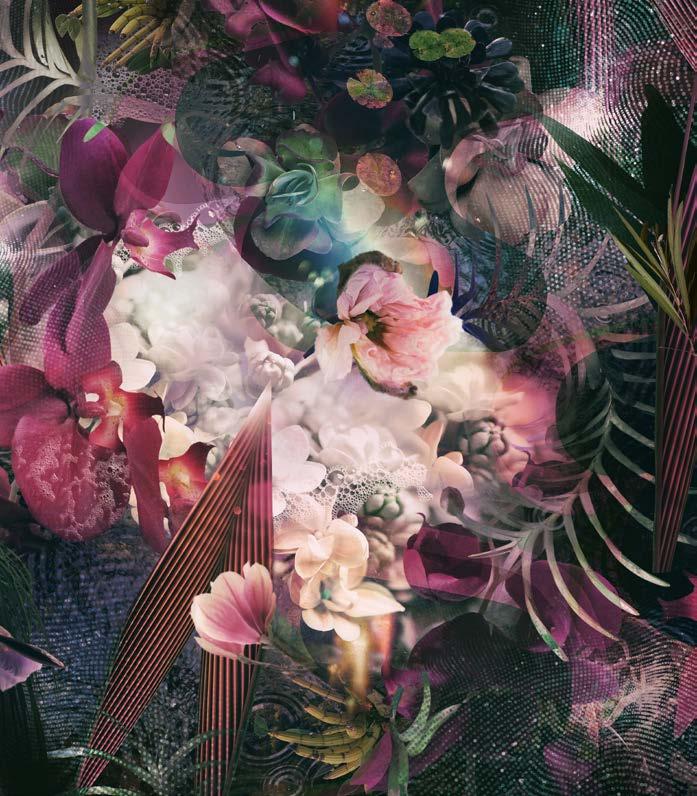 BLUSH,
BLUSH,
Plantas, hongos, flores, naturalezas imposibles en el mundo orgánico, paisajes digitales que no distinguen entre un océano y un bosque son creadas a partir del tratamiento digital de sus propias fotografías, creando imágenes que mezclan el mundo real con la ilusión de un paraíso.
Su conexión con la naturaleza se fortaleció durante su crianza en Quebec, en Canadá, donde su familia tenía una cabaña próxima al norte salvaje de la provincia. Tras su formación profesional en Diseño Gráfico y Comunicaciones, vendrían quince años de trabajo en la industria de la publicidad que marcan un sello distintivo en su visualidad. La búsqueda por hallar gratificación en el trabajo creativo la llevaría a estudiar un programa de pintura independiente, para luego imaginar un mundo en base a la fotografía que la ha llevado a tener una exitosa carrera donde, además, ha explorado el hiper-collage digital, la escultura y los NFT.
Ha sido reconocida internacionalmente por las obras que conceptualiza como panoramas de hiper-collage: “Un término que utilizo como una característica con la que defino la intensidad y complejidad de mi trabajo. Propone una visión distinta de la composición digital tradicional. La descripción de un panorama es una vista despejada o compleja de una zona. Pretendo ofrecer esa complejidad en mi obra porque así es como percibo la naturaleza.” El proceso del hiper-collage es altamente instintivo, permitiendo a cada pieza dictar su propio destino. Desde un punto de vista singular y simple –como una imagen, un color o una emoción–, Ysabel sigue un proceso meticuloso. Primero, aísla y extrae elementos de sus fotografías, los cuales le permiten entrar en contacto con la esencia y la individualidad de cada planta. Todas ellas tienen su propio impacto energético y provocan emociones particulares. Finalmente, entrelaza esos fragmentos entre sí mediante intrincadas composiciones.
La cita de Albert Einstein “Observa profundamente la naturaleza y entonces comprenderás todo mejor”, le resulta inspiradora. En ese sentido, su proceso creativo es “orgánico y fluido”.
Plants, fungi, flowers, natures impossible in the organic world, and digital landscapes that do all but distinguish between an ocean and a forest are created through digital manipulation of her photographs to deliver images that merge the real world and the illusion of a paradise.
Growing up in Quebec, Canada, she bolstered her connection to nature at her family’s cottage in the northern wilderness of the province. After studying graphic design and communications, fifteen years of work in the advertising industry would follow, shaping her distinctive visual signature. The pursuit of more fulfilling paths for her creative work landed her in an independent painting program. Later, this led her to imagine a world based on photography that has given way to a successful career in which she has also explored digital hypercollage, sculpture, and NFTs.
She is internationally renowned for pieces she calls hypercollage landscapes: “a term I use as a characteristic to define the intensity and complexity of my work. It proposes a distinctive view of traditional digital composite. The description of a panorama is an unobstructed or complex view of an area. I intend to offer that complexity in my work because this is how I perceive nature.” The process of hypercollages is instinctual and organic, allowing each piece to dictate its own destiny. From a single, simple starting point —an image, a color, an emotion— Ysabel follows a meticulous process. First, she isolates and extracts elements of her photos, enabling her to connect with the essence and individuality of each plant. All of them have their own unique energy and elicit specific emotions. Then, she intertwines the fragments in intricate compositions.
Albert Einstein’s quote, “Look deep into nature, and then you will understand everything better”, inspires her. Thus, her creative process is “organic and fluid”.


EDEN, 2022, composición digital, 91.44 cm.

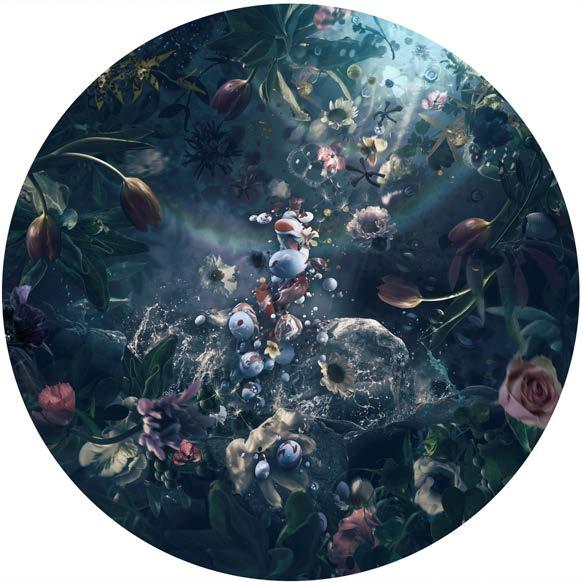
Le gusta saber que ella es parte del mismo tejido de la vida que crea todas las cosas. Ve la naturaleza a través de sus lentes holográficos. Primero, es afectada por su esplendor. Luego, conecta con el campo energético, el cual abre la puerta de la información y el conocimiento donde se manifiestan los pensamientos creativos: “Al dejar que su energía fluya a través de mí, primero percibo y luego demuestro visualmente la magia del mundo vivo. Mi interacción con la naturaleza me permite comprender más profundamente mi comunión con esta y con los demás, y creo que su poder primordial puede ayudar a elevar nuestra conciencia colectiva”, explica.
Sus piezas han circulado en más de 135 exhibiciones en distintos países, también han sido adquiridas por colecciones públicas, corporaciones y museos. Quizás, una de las formas más innovadoras en que su obra ha circulado ha sido la venta de Flower of Sentience (2023), a través de su página web, como NFT, tecnología que representa la propiedad de elementos digitales coleccionables, únicos e intransferibles, conservando los registros de propiedad intelectual.
A pesar de lo anterior, se muestra crítica respecto al uso de inteligencia artificial en el arte contemporáneo. A inicios de 2023 tuvo la oportunidad de sumergirse en el mundo de la IA, siendo comisionada para crear veinte retratos basados en fábulas. Durante esas semanas, sintió una inmensa atracción hacia la dirección opuesta del encargo recibido. La naturaleza la estaba llamando de vuelta, de manera fuerte y clara. LeMay considera que en la actualidad vivimos en dos mundos diferentes en el planeta, por un lado, el mundo de la IA; por el otro, el mundo de la naturaleza: “Tomé personalmente la decisión de profundizar en mi relación con el mundo físico y el espíritu de la Madre Tierra. Ya se abrió la caja de Pandora con la IA. Está influyendo profundamente en nuestra forma de crear y trabajar. Rápido… muy rápido.”
She relishes in knowing she is part of the very fabric that creates all things. She sees nature through her holographic lens. First, she is moved by its splendor. Then, she connects to the energy field that opens the door for information and knowledge leading to creative ideas: “By allowing its energy to run through me, I first perceive and then visually demonstrate the magic of the living world. My interaction with nature allows me to understand more deeply my communion with it and others, and I believe its primordial power can help lift our collective consciousness,” she explains.
Her pieces have been shown in more than 135 exhibitions around the world, and have also been acquired by public collections, corporations, and museums. Perhaps one of the most innovative ways in which her work has circulated has been through the sale of Flower of Sentience (2023) on her website as NFT, a technology that represents the ownership of collectible, unique, and non-transferable digital elements, preserving the intellectual property.
Despite this, she is critical of the use of artificial intelligence in contemporary art. In early 2023, she had the opportunity to delve into the world of AI, as she was commissioned to create twenty portraits based on fables. For weeks, she was strongly drawn towards a path that was opposite to the one she was commissioned to take. Nature was calling on her again –firmly and clearly. LeMay believes that we are living in two different worlds on this planet: on the one hand, the world of AI, and on the other, the world of nature. “I personally made the decision to deepen my relationship with the physical world and the spirit of Mother Earth. The genie is out of the AI bottle. It is impacting profoundly how we create and work. Rapidly… too rapidly.




durante diez años dirigí el Palais de Glace, un espacio emblemático para la cultura en la ciudad de Buenos Aires. Transité todos los sectores de un edificio construido en 1911 como pista de patinaje sobre hielo. Jamás vi el punto de vista que encontró Raquel Bigio (1941-2022), para su emblemática fotografía que fue tapa de la exposición que el crítico Jorge Glusberg, le organizó en el Museo Nacional de Bellas Artes de Argentina, en 1999. Toda la esbeltez del fuste de la columna se eleva para recibir sobre el capitel, el peso del arco de medio punto. Podría escribir que frenó en una baldosa y rápidamente su ojo captó la suave armonía, donde la estructura del espacio circular descansa para ofrecerse al visitante.
Esa es la característica de la fotografía de Raquel Bigio. Ver lo que no se ve. Así fue desarrollando su imagen a partir de tener claro a donde quería llegar, como bien lo expresara el fotógrafo estadounidense Ansel Adams: “no hay nada peor que la imagen nítida de un concepto difuso”.
En 2023 sus fotografías se exhibieron en la XIV Florence Biennale, recibiendo el premio “Lorenzo il Magnifico - in Memoriam”. Una distinción que en ediciones anteriores le otorgaron a Marina Abramović, David Hockney, Christo y Jeanne-Claude, Gilbert & George, Anish Kapoor y en el rubro Diseño a Franco Zeffirelli y al arquitecto Santiago Calatrava, entre otros.
¿Qué vio el jurado en la obra fotográfica de Raquel Bigio? Vieron una mirada espontánea, intuitiva, fresca, conviviendo con una aguda racionalidad perceptiva. Raquel poseía un registro visual sensible que desarrolló en la juventud, a partir de su pasión por el cine. Al ver sus fotografías del interior del Museo de los Inmigrantes, un antiguo edificio en el puerto de Buenos Aires, se puede intuir el aura de cientos de miles de expatriados que al llegar a la Argentina debieron permanecer semanas allí. La luz del atardecer le permitió alcanzar una proyección sensible de la interioridad de ese espacio de recibimiento, un albor cromático que signó su actitud estética y detuvo para siempre el momento de incertidumbre de los que vivían confinados. “Fotografiar es colocar la cabeza, el ojo y el corazón en un mismo eje”, expresó Henri Cartier-Bresson.
Raquel Bigio se vinculó a la fotografía a partir de los cursos de laboratorio en blanco y negro y color que dictaba el Foto Club Argentino. Su paso por las Escuelas de Bellas Artes también conformó su vocación de
for ten years, I led the Palais de Glace, an emblematic space for culture in Buenos Aires. I navigated all areas of the building built in 1911 as if in an ice-skating rink. I never saw the point of view that Raquel Bigio (1941-2022) found for her signature photograph, which became the cover of the exhibition that art critic Jorge Glusberg organized for Argentina’s National Fine Arts Museum in 1999. The entirety of the slender column rises to support the weight of the semicircular arch on the capital. I could write she suddenly stopped on a tile a quickly set her eye to capture the soft harmony of where the structure in the circular space rests to offer itself to the viewer.
This is what distinguishes Raquel Bigio’s photography: managing to see what others cannot. She developed her images by having a clear goal, as American photographer Ansel Adams said: “There is nothing worse than a sharp image of a fuzzy concept.”
In 2023, her pictures were showcased in the XIV Florence Biennale, and honored with a “Lorenzo il Magnifico - In Memoriam” Award. In previous editions, this distinction has been awarded to Marina Abramović, David Hockney, Christo and Jeanne-Claude, Gilbert & George, Anish Kapoor, and, in the field of design, to Franco Zeffirelli and architect Santiago Calatrava, among others.
What did the jury see in Raquel Bigio’s photography work? They saw a spontaneous, intuitive, fresh perspective, alongside a sharp perceptive rationale. Raquel had a sensitive visual range that she developed in her youth, through her passion for film. Upon viewing her photographs within the Immigrant Museum, an old building in the Port of Buenos Aires, it is possible to sense the aura of hundreds of thousands of ex-pats who arrived in Argentina and had to remain there for weeks. Sunset light allowed her to reach a sensitive projection of the intimate nature of that shelter, a chromatic dawn that marked her style and halted time in the moment of uncertainty of those who lived there in confinement. “To take photographs is putting one’s head, one’s eye, and one’s heart on the same axis,” said Henri Cartier-Bresson.
Raquel Bigio first ventured into photography with black and white developing workshops taught at Argentina’s Photo Club. Her time in the Fine Arts School also shaped her passion for looking through the lens

Ritmos, 1987, fotografía análoga, toma directa, medidas variables. Museo Paul Getty, California, EE.UU. Premios de la Crítica para la Fotografía 1989 de la AACC.
ver a través de la cámara y destacarse por sus encuadres personales. Realizó talleres de creatividad en la Escuela Argentina de Fotografía y participó en seminarios con Alain Desvergnes, director de la Escuela Nacional de Fotografía de Francia, y con Michel Delaborde y Matt Mahurin en los Encuentros Internacionales de Fotografía en Arles, Francia. Estudió con Lucien Clergue y Luis González Palma.
Desde 1994 hasta 2000, se desempeñó como curadora de fotografía en el Centro Cultural Recoleta. En 1999, fue seleccionada para participar en el Seminario Internacional «Museología, Diseño, Gestión y Planificación de Eventos en Arte Contemporáneo», organizado por el Fondo Nacional de las Artes, la Fundación PROA y el Museo Guggenheim. Participó como miembro del jurado en concursos de diversas instituciones públicas y privadas.
En sus trabajos fotográficos es difícil que aparezca la figura humana, prefería alcanzar en las formas arquitectónicas una búsqueda metafísica que expresara el “sonido del silencio”; como dijera Robert Doisneau, “describir es destruir, sugerir es crear”.
Raquel Bigio fue una verdadera creadora, es imposible no detenerse frente a sus obras en las que desarrolló un lenguaje visual propio, lo enalteció y nos educó para convertirnos en artistas de la contemplación. Ella no buscaba el azar, tampoco un momento fortuito por estar en el lugar adecuado, sino que confiaba en la capacidad de su mirada para elegir una composición que contuviera la minuciosidad y los detalles: líneas que generaran direcciones, lo opuesto entre lleno y vacío, la intensidad de los reflejos y el enigma de la luz. En todo lo que observaba encontraba la armonía perfecta de las cosas, generando puntos de vista dominantes que capturan para siempre la mirada del contemplador.
Encontró en la forma de las cosas, la proyección de su interioridad: el silencio, lo ascético, lo esencial. Alguna vez dijo “…yo tomo las fotos al atardecer y con ese tono lumínico busco integrar y elevar el espíritu humano por medio de la razón y el sentimiento. Mis trabajos aspiran a expresar el sonido del silencio. Ahí es cuando el reflejo alcanza su máxima tensión”.
Raquel Bigio abordó la fotografía desde una mirada personal. Lo que nuestro ojo no ve en lo cotidiano, lo descubre a través de su obra; se trata de un encuentro con lo maravilloso.
and standing out for her personal frames. She did creativity workshops in Argentina’s School of Photography and participated in seminars with Alain Desvergnes, Director of École Nationale Supérieure de la Photographie in France, and with Michel Delaborde and Matt Mahurin at the Rencontres d’Arles in France. She studied with Lucien Clergue and Luis González Palma.
From 1994 to 2000, she worked as a photography curator at the Recoleta Cultural Center. In 1999, she was selected to participate in the International Seminar “Museology, Design, Event Management and Planning in Contemporary Art” organized by Argentina’s National Art Fund, the PROA Foundation, and the Guggenheim Museum. She has been a member of the jury for competitions at several private and public institutions.
Her photography work rarely features human figures; she preferred to explore the metaphysical heights in architectural shapes to convey the “sound of silence” because, as Robert Doisneau would say, “to suggest is to create: to describe is to destroy.”
Raquel Bigio was a true creator. It is impossible not to stop in front of the pieces in which she developed her own visual language, elevated it, and educated us to turn us into artists of contemplation. She did not seek chance, nor a fleeting situation while being at the right moment at the right time. Instead, she relied on the ability of her gaze to choose a composition that could contain precision and details: lines that provided a direction, the opposition of fullness and emptiness, the intensity of reflections, and the enigma of light. In everything she observed, she found the perfect harmony of things, creating dominant points of view that forever captivate the eye of the beholder.
In the shape of things, she found an extension of her inner world: the silent, ascetic, and essential. She once said: “I take pictures at sunset, and in that light tone, I seek to integrate and elevate the human spirit through reason and feeling. My work aspires to express the sound of silence. That is when reflection reaches its maximum tension.”
Raquel Bigio approached photography through a very personal lens. What our eyes miss in daily life, she discovered through her work. It is an encounter with the marvelous.

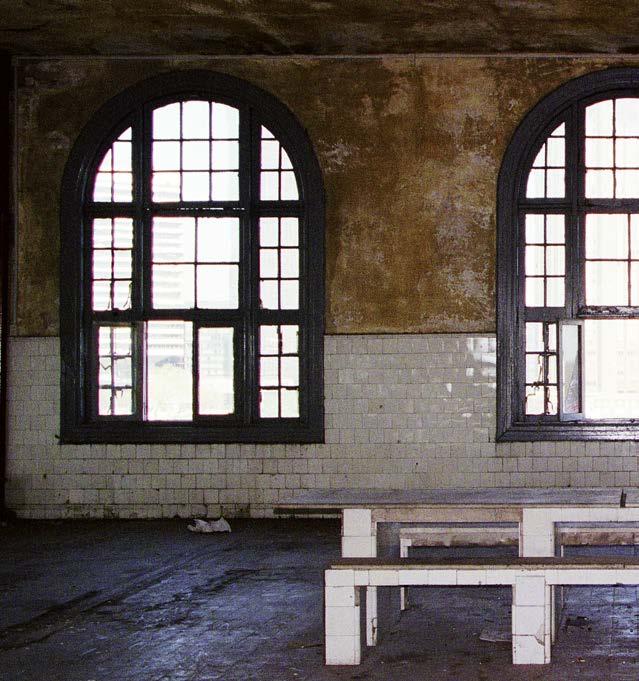
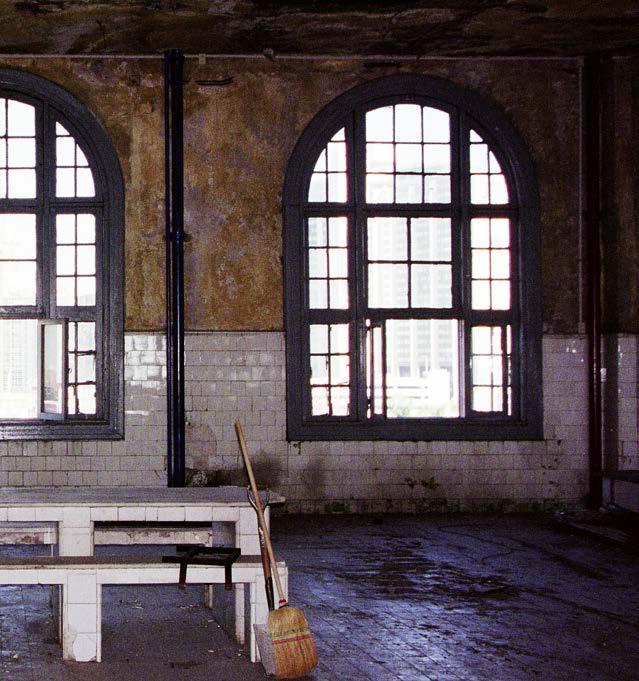
Hotel de los inmigrantes , 2016, fotografía digital, toma directa, medidas variables.
México
Por Carolina Bravo. Periodista (Chile)
Imágenes cortesía del artista.


De la serie Tormenta de Luz , “Círculo Mongol-Desierto de Gobi”, 2013, fotografía digital de medio formato, 120 x 160 cm.
este artista mexicano, considerado uno de los fotógrafos conceptuales contemporáneos más importantes de su país, ha pasado los últimos 30 años interviniendo el paisaje desértico. Nacido en Saltillo, Coahuila, una ciudad en el noroeste de México, ha sentido fascinación por la inmensidad del paisaje tatuado por el sol desde que tiene memoria. Desde los 90’s ha participado en casi un centenar de exposiciones individuales y colectivas y su trabajo ha sido expuesto en los cinco continentes.
Para recrear el escenario donde se desarrollarán sus historias, lo hace montando escenas con una variedad de elementos y así es como en medio de la vastedad, a veces agobiante del desierto, construye y fotografía espacios íntimos, algunos de los cuales son reflexiones sobre la dolorosa desertificación del planeta causada por el hombre; y otros, alusiones irónicas a nuestra relación con el desierto, usualmente mirado como un lugar donde la vida no es posible.
Fue en su época de estudiante universitario que comenzó a vincularse de algún modo con el arte, cuando un familiar inauguró una galería y le pedía colaborar en los arreglos de cada muestra. Desde entonces se deslumbró con la pintura y en especial el movimiento del expresionismo abstracto y sus creadores como Rothko, Frankenthaler, De Kooning, Cy Twombly, Pollock y otros. Para Alfredo, este movimiento y sus creadores instalaron en él la curiosidad por lo que vendría más adelante, impulsándolo a ser artista tras terminar sus estudios en comunicación y mercadotecnia.
this Mexican artist, regarded as one of the most important contemporary conceptual photographers in the country, has spent the last 30 years intervening desert landscapes. Born in Saltillo, Coahuila, a desert city in northeast Mexico, he has been fascinated by the vastness of landscapes tattooed by the sun ever since he can remember. He has participated in almost a hundred solo and collective exhibitions since the 90s, and his work has been shown in all five continents.
To recreate the scenario where his stories take place, he stages scenes with an array of elements. Amid the often-times overwhelming vastness of the desert, he builds and photographs intimate spaces, some of which are reflections on the horrific man-made desertification of the planet, while others are ironic allusions to our relationship with the desert, usually regarded as a place where life is an impossibility.
During his years at university, he started to connect to art when a family member opened up a gallery and asked him to collaborate in the staging for every sample. Since then, he has been captivated by painting and, particularly by the abstract expressionist movement and its creators such as Rothko, Frankenthaler, De Kooning, Cy Twombly, and Pollock, among others. For Alfredo, this movement and its creators instilled in him a curiosity that would come later, pushing him to be an artist after finishing his studies in marketing and communication.


De la serie Tormenta de Luz , “Línea de Nazca-Desierto de Nazca”, 2014, fotografía digital de medio formato, 120 x 160 cm.
Alfredo cuenta que nunca intentó pintar, porque sabía que no tenía esa “destreza”, pero encontró en la fotografía el medio para expresarse artísticamente. Y así fue como sin plan de por medio, todo comenzó a fluir y revelarse de manera natural. Su formación académica lo conectó tangencialmente en sus inicios con la fotografía comercial, haciendo fotos de lo que se presentara, entre ellas de moda y arquitectura, al tiempo que desarrollaba su obra personal con persistencia, “aunque no vendiera ninguna foto”. En síntesis, en esa época sabía que le encantaba el arte, pero siendo honesto consigo mismo, aunque le gustaba la pintura, sabía que no era su fuerte y practicaba la fotografía como hobby, pero también para subsistir.
Es esta la etapa donde, de alguna manera, se sentaron los cimientos de su carrera como artista visual, aprendiendo la técnica y acuñando su estilo. Su incursión en el arte como una decisión de vida llegaría más tarde, cuando eligió el paisaje como tema principal de su obra y que la desarrollaría a través del lenguaje conceptual.
A través de tu trayectoria ¿cuáles han sido los elementos recurrentes en tu obra? Utilizo diversos elementos de distintos materiales, ya sean naturales o fabricados y los empleo según el desierto específico; su historia geológica, las culturas que lo pueblan, su flora o fauna, entre otros. Todo eso lo investigo antes de viajar y me ayuda a elegir qué elementos formarán parte de cada fotografía. El círculo es la figura que más aparece en mis obras y tiene mucha relación con mi mensaje en el paisaje; es la forma más habitual en el mundo natural y simboliza muchas cosas como el origen y el destino, el nacer y el morir, los ciclos, la totalidad, la eternidad.
Alfredo reveals he never tried to paint, because he knew he did not have the “skill” but in photography he found the means for his artistic expression. Thus, without a clear plan, everything started to flow and unveil before him organically. Due to his academic background, he became tangentially involved with commercial photography at an early stage, shooting photographs of whatever came before him, namely fashion and architecture. At the same time, he persistently developed his personal body of work, although he “sold no photos”. In brief, he knew he loved art at the time but, if he was honest with himself, even if he liked painting, he understood it was not his forte. He practiced photography as a hobby, but also to survive.
In was during that time that the foundations of his career as a visual artist were finally laid somehow, while he learned about technique and developed his style. His journey into art was a life decision he made later, when he chose landscapes as the main theme of his work and that he would develop through a conceptual language.
Throughout your career, what have been the recurring elements in your work?
I use several elements from different materials, whether they be manufactured or natural, and I select them according to the specific desert, its geological history, the cultures that inhabit it, its flora and fauna, among others. I research all this before I travel and it helps me choose the elements that will make up each photograph. Circles are the figures that appear the most in my pieces, and they are highly connected with my message in landscapes. They are the most common shape in nature and symbolize many things like the origin and fate, birth and death, cycles, wholeness, eternity.

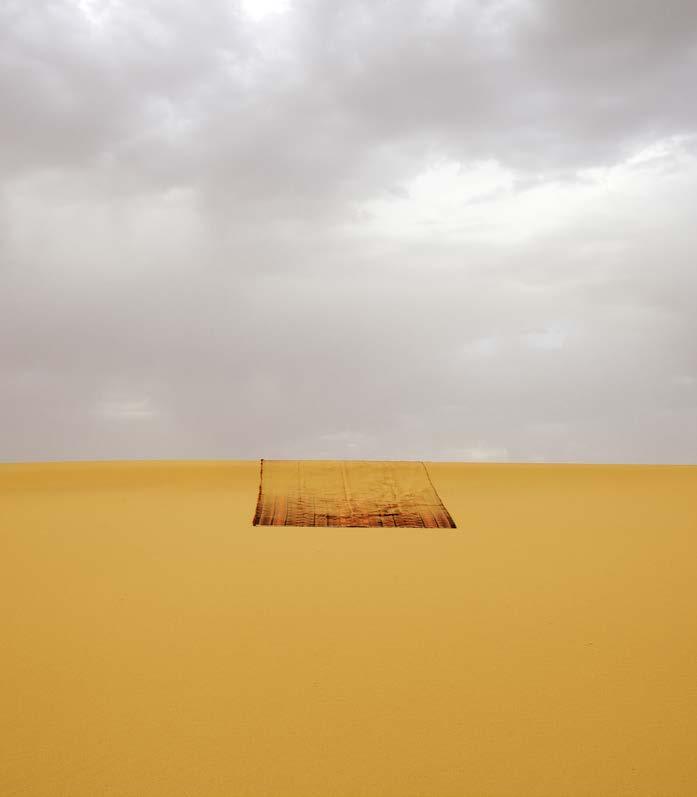
De la serie Tormenta de Luz , “Tapete Nómada-Desierto de Sahara”, 2012, fotografía digital, 120 x 172 cm.
¿Qué mensajes intentas transmitir a través de los universos que recreas?
Reflexionar sobre las interrogantes de la existencia humana, el tiempo y la muerte. El desierto es un espacio que dimensiona al ser. En lo que concierne al cuerpo y a su escala, el desierto nos hace conscientes de nuestras limitaciones. En lo que se refiere al espíritu, el desierto nos fortalece; nos vincula con un paisaje amplio y a la vez con el universo.
¿Cuándo y por qué elegiste el desierto? ¿Qué es lo que quieres transmitir de la cultura del desierto?
El desierto forma parte de mi obra desde que comencé mi carrera. Lo escogí porque crecí en una zona desértica y puedo afirmar que es y ha sido mi entorno natural desde siempre. Por eso esa visión sobre el paisaje del desierto viene de mi niñez, pero con el tiempo aprendí a observar la naturaleza en profundidad, descubriendo lo que tiene de singular. Mis obras conservan siempre una conexión íntima con la naturaleza; estas deben tener una conversación interna con el espacio y cada sitio necesita una intervención única, como si esa obra fuera un añadido del sitio y de lo que ocurre a su alrededor.
Podrías contarme ¿cuál ha sido tu desierto favorito y tu trabajo más desafiante?
Esa es una cuestión complicada porque todos me agradan, pero puedo afirmar con seguridad que los tres primeros preferidos son el de Atacama, el de Namibia y los paisajes desérticos de Islandia. A ellos he vuelto en varias ocasiones. Todos los desiertos son complejos, remotos y de difícil acceso, sobre todo las áreas donde me gusta indagar y trabajar.
Mi serie más exigente ha sido Tormenta de Luz, que me llevó diez años construir por muchos desiertos del mundo.
What messages do you try to convey through the universes you recreate?
Reflections on the questions of human existence, time and death. The desert is a space that heightens the self. In terms of the body and its scale, the desert makes us aware of our limitations. In terms of the spirit, the desert strengthens us, connects us to a vast landscape and the universe.
When and why did you choose the desert? What do you want to convey from the culture of the desert?
The desert has been part of my work since I started my career. I chose it because I grew up in a desert zone and it has always been my natural environment. For this reason, my view of the desert landscape comes from my childhood, but in time I learned to observe nature in depth, discovering its uniqueness. My pieces always hold an intimate connection with nature. They must have an inner conversation with the space and each site requires a unique intervention, as if the pieces were a complement to the space and what is happening around it.
Could you tell me what has been your favorite desert and your most challenging work?
This is a complicated question. I like them all, but I can confidently say that my favorite three have been the Atacama and Namib desert, and the sandy landscapes of Iceland. I have returned there on several occasions. All deserts are complex, remote, hard to access, and, above all else, the areas I like to explore and work in. My most demanding series was Tormenta de Luz , which took me 10 years to build in deserts all over the world.


Los escenarios de tu obra son habitualmente monumentales y mezclas distintas disciplinas. Cuéntame sobre algunos trabajos que para ti han representado verdaderos retos.
Me atraen los grandes retos y mis dos últimos proyectos no son la excepción: Tormenta de Luz- El Concierto muestra mi obra fotográfica de más de 20 años, por quince desiertos del planeta, llevada a una experiencia visual, sensorial y sonora a través de la música en vivo con la Orquesta Filarmónica del Desierto. Son noches de conciertos-exposición envolventes al aire libre o en espacios cerrados, donde la música clásica, la tecnología, la fotografía, la Inteligencia Artificial (AI) y la animación, a través de una pantalla gigante de 3 x 18 mts y proyectores láser, sumergen al público en un espectáculo único de arte y música.
BURN, un proyecto cinematográfico sin fines de lucro, compuesto de seis historias que al final se unirán con la voz de un narrador, quedando una película de aproximadamente 30 a 40 minutos. Es una crónica visual y conceptual desde el arte sobre los incendios y sus consecuencias, que están acabando cada año con la flora, fauna y la vida del planeta. El fuego como fuente de vida o poder destructivo; como símbolo ancestral, infierno, paraíso y éxtasis. El fuego como paradoja de la permanencia y del cambio, el fuego como cualidad cíclica de la materia.
¿Cuál es la principal enseñanza de vida que te ha dado el desierto?
Que el desierto es el mejor lugar para la transformación del ser humano, el espacio geográfico donde en esa vastedad y aparente soledad, logras la espiritualidad y la unión con el universo.
The scenes in your work are usually monumental and mix different disciplines. Tell me about some of the pieces that have constituted true challenges.
I am drawn to great challenges and my two most recent projects are no exception: Tormenta de Luz - El Concierto , compiles over 20 years of my photography work in 15 deserts worldwide. It is a visual, sensory and sound experience featuring live music from the philharmonic Orquesta Filarmónica del Desierto. These are immersive concert-exhibition events in the evenings both outdoors and indoors, where classical music, technology, photography, Artificial Intelligence (AI) and animation, through a giant 3 x 18-meter screen and laser projectors, immerse the audience in a unique spectacle of art and music.
BURN , a non-profit film project, is made up of 6 stories threaded together by a narrator in a 30 to 40 min film. It is a visual and conceptual chronicle told from the perspective of art about the fires and their consequences, which are destroying the flora, fauna and life of the planet every year. It is about fire as a source of life or destructive power; as an ancestral symbol, hell, paradise and ecstasy. Fire is a paradox of permanence and change, fire as a cyclical quality of matter.
What is the main life lesson the desert has taught you?
That the desert is the best place for the transformation of human beings; it is the geographical space where, in that vastness and apparent solitude, you achieve spirituality and union with the universe.


Por Julio Sapollnik. Crítico de arte (Argentina)
Imágenes cortesía del artista.
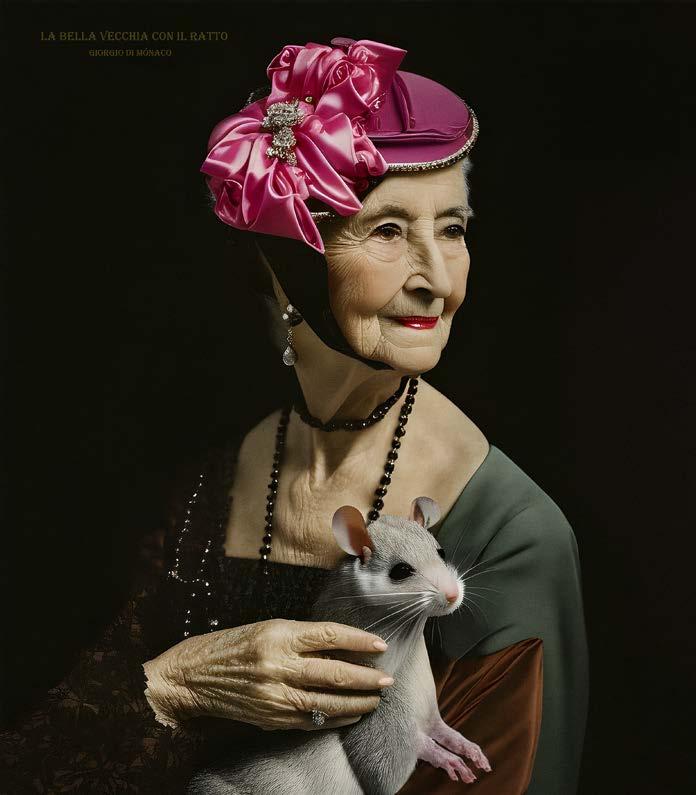
La bella anciana con rata , 2023, imágenes generadas con inteligencia artificial, medidas variables.
bien podría definirse la personalidad de Jorge Mónaco como un investigador que a través de la imagen indaga la realidad. Su pasión por la fotografía alimenta su curiosidad y la revisión del material obtenido lo lleva a encontrar la perla oculta que da origen al desarrollo de una nueva serie. Puede ser: “Menonitas”, “Cuba”, “Albinos” referido a las personas que poseen esa condición genética, o “Memorias de la guerra” tras su paso por Vietnam.
Así nació “Trasnistria: el país que no existe”; un reporte fotográfico muy difícil de realizar, donde muestra una nación que hace más de veinte años está en stand by, sin existir hacia afuera. La República “Pridnestrovia”, más conocida como Transnistria, es una estrecha franja de tierra de 200 km. de largo en el lado Este del río Dniéster. Tras la disolución de la Unión Soviética declaró su independencia en 1990 comenzando una guerra con Moldavia que concluyó en 1992.
Nuestro fotógrafo debió atravesar Turquía, luego Moldavia para llegar al país que no existe, al que podía entrar sólo con una visa de diez horas por día. Jorge Mónaco, de ascendencia española e italiana, es ruso parlante y esto le permitió sortear muchas dificultades a la hora de investigar un territorio que surgió cuando cayó la Unión Soviética. Cualquier semejanza con la película “La terminal”, dirigida por Steven Spielberg en 2004, y protagonizada por Tom Hanks y Catherine Zeta-Jones, es una mera coincidencia.
En sus fotografías convive el rigor de la arquitectura soviética con los antiguos líderes erigidos en sus pedestales y aquellos hogares pop que enarbolan la bandera norteamericana.
También desarrolló diferentes series a partir de la Inteligencia Artificial. En una de estas series, se apropió de grandes obras del arte universal y las presentó con el aspecto del deterioro que genera el paso del tiempo. La dama del armiño, pintada por Leonardo da Vinci, hacia 1490, se transformó en La bella anciana con rata. Realizó allí una revisita absurda e irónica donde la potencia de la imaginación transformó la idea de belleza, a pesar del implacable tiempo transcurrido.
j orge Mónaco’s personality might be defined as a researcher that explores reality through images. His passion for photography nurtures his curiosity and reviewing the end results leads him to find a hidden gem that births a new series, whether that be “Menonitas”, “Cuba”, or “Albinos”, referencing people with that genetic condition, or “Memories of the War”, which he created after spending time in Vietnam.
This is how “Trasnistria: the country that doesn’t exist” came about. This photoreport was very difficult to produce, and it shows a nation that has been on standby for over 20 years, not existing to the world beyond it. The Pridnestrovian Moldavian Republic, better known as Transnistria, is a narrow 200-km strip of land on the east side of the Dniester River. In 1990, after the dissolution of the Soviet Union, it declared its independence, triggering a war with Moldova that lasted until 1992.
The photographer had to travel through Turkey and then Moldova to arrive to the country that doesn’t exist, which he could only enter with a visa for 10 hours at the time per day. Of Spanish and Italian descent, Jorge Mónaco speaks Russian, which allowed him to surmount many of the obstacles he encountered when researching a territory that emerged after the fall of the Soviet Union. Any similarity with the 2004 movie “The Terminal”, directed by Steven Spielberg and starring Tom Hanks and Catherine Zeta-Jones, is purely coincidental.
In his photographs, the rigor of Soviet architecture, old leaders standing on pedestals and pop-culture influenced homes hoisting American flags coexist.
He has also developed several series using artificial intelligence. In one of such series, he appropriated great works of art in world history and presented them with a deteriorating appearance as if caused by the passage of time. Lady with an Ermine, painted by Leonardo da Vinci around 1490, became Beautiful Elderly Lady with a Rat. There, he revisited the original piece with absurdity and irony, and, with the power of imagination, he transformed the idea of beauty, despite the relentless passage of time.
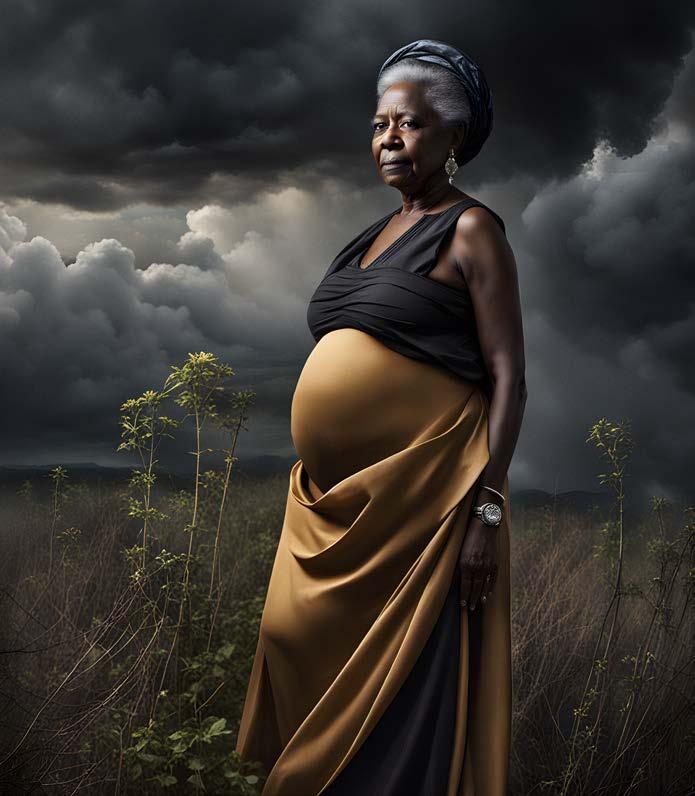
Simone , 2024, imágenes generadas con inteligencia artificial, medidas variables.
Embarazo después de los 70 años , 2023, imágenes generadas con inteligencia artificial, medidas variables.
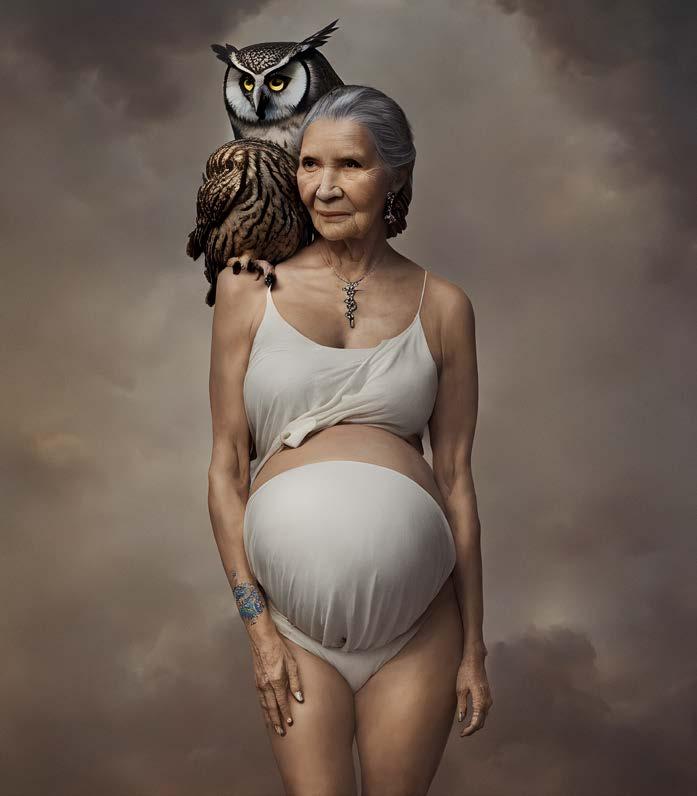
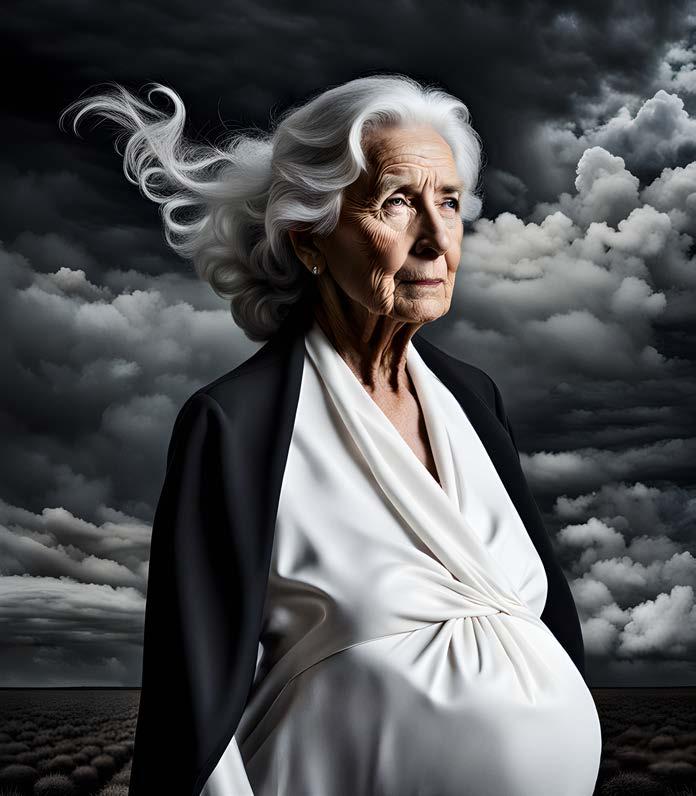
La dama de blanco , 2024, imágenes generadas con inteligencia artificial, medidas variables.
Así comenzó a aplicar la Inteligencia Artificial en los trabajos fotográficos de mujeres de más de setenta años embarazadas por fertilización in vitro. A partir de las decisiones que como artista iba tomando, el algoritmo iba haciendo su trabajo de unir imágenes jamás concebidas.
Jorge Mónaco se valió de su experiencia docente para reflexionar sobre la credibilidad que le otorga el contemplador a la realidad en la fotografía, a diferencia de la pintura que siempre está tamizada por la subjetividad del pintor. Del mismo modo, es consciente que a partir de los avances de la ciencia, tanto en técnicas fotográficas como en Inteligencia Artificial, surgen nuevos dilemas éticos, estéticos y filosóficos que obligan a los artistas a reflexionar y tomar posición sobre sus decisiones visuales. Esta particularidad se dio en diferentes momentos de la historia de la fotografía. Una actitud muy difundida es la que lleva al fotógrafo a aplicar lo que se conoce con el nombre de “recorte a la realidad”; es una instancia dentro de la técnica que le proporciona a la imagen una gran potencia dramática. Así ocurrió, por ejemplo, con la fotografía del reportero gráfico Kevin Carter, quien ganó el premio Pulitzer al fotografiar a Un niño hambriento junto a un buitre que lo espera. La imagen que impactó al mundo fue tomada en Sudán, dentro del “Triángulo de la Hambruna”, y es altamente conmovedora. En la realidad el niño nunca estuvo en peligro, ya que sus familiares estaban muy cerca de él, detrás del recorte de la imagen.
Podríamos decir que Jorge Mónaco toma decisiones apropiadas sobre la ética de la imagen. En sus fotografías propone un punto de vista abierto sobre el cual el espectador asume la propia responsabilidad de dar contenido a la experiencia contemplativa. Como artista fotográfico obtuvo recientemente un gran reconocimiento en el Salón Nacional de Artes Visuales de Argentina. Su mirar y su sentir no ceden el control de la creación, tiene muy claro el concepto de Byung-Chul Han cuando expresó: “La inteligencia Artificial es incapaz de pensar, es demasiado inteligente para ser un idiota”.
Likewise, he started using AI in his photographic work to create portraits of women over the age of 70 years, pregnant through in vitro fertilization. With every decision he made as an artist, the algorithm did its job of merging images that were never conceived before.
Jorge Mónaco made use of his experience as a teacher to reflect on the credibility that viewers bestow on the reality of a photograph, which, unlike the case of paintings, where reality is always filtered by the subjectivity of the painter. The artist is also aware that, through technological advances, both in photography and AI, new ethical, aesthetic, and philosophical dilemmas emerge, which makes artists reflect and take a stance on their visual choices. This has happened before in several moments in the history of photography. A very widespread practice is what led the photographer to apply what is known as “cropping reality”, a technique that provides images with great dramatic power. In fact, this is what happened with the Pulitzer Prize-winning picture by photojournalist Kevin Carter, The Vulture and the Little Girl The photograph that shook the world, taken in Sudan in the Hunger Triangle, is highly moving and sparked a major ethical controversy.
We could say Jorge Mónaco makes the right decisions in terms of picture ethics. In his photographs, he proposes an open point of view where it’s viewers who take on the responsibility of providing substance to the experience of contemplation. As a photography artist, he recently received a great acknowledgment at the National Hall of Visual Arts in Argentina. His vision and his emotion do not surrender control of creation, as the artist is fully aware of what Byung-Chul Han meant when he stated: “Artificial intelligence cannot think because it is incapable of faire l’idiot . It is too intelligent for becoming an idiot.”

2024, imágenes generadas con inteligencia artificial, medidas variables.
Por Elisa Massardo. Lic. en Historia y Estética (Chile)
Imágenes cortesía de la artista.
Representada por Casa Hoffmann.
 Melting Cloth Oil , 2023, imagen generada con inteligencia artificial, 26 x 26 cm.
Melting Cloth Oil , 2023, imagen generada con inteligencia artificial, 26 x 26 cm.
os colores parecen derretirse como si fueran un helado en pleno sol de verano bajo las altas temperaturas que ha alcanzado el mundo actual; pareciera que se mezclan como acuarela, como si el agua fluyera con ellos de manera continua; los colores le dan vida a las obras de Violet Forest que parecen ser fotografías, sin embargo, requieren conocimientos en el mundo de la inteligencia artificial para ser creados.
El mundo cambió, de forma definitiva y lo análogo pareciera ser que quedará en el olvido. El trabajo de Violet Forest lo hace manifiesto y tal como dice la artista: “Mi exploración de las imágenes generadas por IA se inspiraba en el enfoque del fotógrafo Garry Winogrand, quien famosamente dijo que tomaba fotos de cosas para ver cómo lucían una vez fotografiadas. De manera similar, con respecto a la IA me intrigaba cómo los modelos generativos renderizarían la luz y cómo representarían fenómenos físicos que no pueden existir en el mundo real”.
Y así es como Violet se imagina mucho más que los modelos generativos, se imagina y vislumbra mundos completos: “Me interesaría crear un mundo de realidad virtual que esté cubierto de shaders y materiales pastel, iridiscentes y holográficos, para que puedas obtener esa sensación de asombro que surge al mirar cosas iridiscentes. Podría existir en un mundo virtual con una versión de instalación inmersiva, o en una realidad mixta para que ambos puedan coexistir”, pero, ¿de qué forma comenzó este afanado interés por la virtualidad?
¿Cómo llegaste a trabajar con tecnología? Y, ¿Qué rol cumple actualmente en tu obra su uso?
Estudié arte y tecnología, es decir, código creativo, o el uso del código como herramienta creativa. Mi proceso, trabajando con tecnología, se centra en investigar cómo se pueden utilizar para la expresión humana. Estas investigaciones incluyen tecnologías como realidad aumentada, realidad virtual, IA, y aprendizaje de máquina. Actualmente trabajo en Meta como desarrolladora y Technical Artist para el metaverso, manejando diversos programas de 3D y de creación de videojuegos. Además, mis estudios en fotografía complementan mi trabajo con IA generativa, uniendo el estudio de la inteligencia artificial generativa con el análisis de la imagen.
La serie Dripping Verisimilitude, representa precisamente esto: una colección de imágenes generadas por IA que engañan al ojo, haciéndose pasar por fotografías. Estas obras, con texturas y formas hiperrealistas, incorporan elementos que desafían las leyes de la física, como distorsiones sutiles y desobediencias a la gravedad. En ellas, las flores parecen derretirse, los líquidos flotan y los pelajes irradian un brillo iridiscente. En mis composiciones, arreglo flores, telas y materiales especulares y metálicos en una composición, similar a cómo un pintor podría usar una naturaleza muerta para estudiar cómo la luz se refleja en un pedazo de tela o un objeto metálico.
El color en tu trabajo pareciera ser muy relevante, sobre todo los tonos RGB, ¿cómo los seleccionas y desarrollas?
Me interesan los fenómenos ópticos como los efectos holográficos y la iridiscencia, y cómo pueden ser renderizados por shaders. Por eso, me gusta utilizar una paleta de colores pastel como base para experimentar con las
colors seem to melt as ice cream sitting under the summer sun, subject to the high temperatures the world has reached. They seem to mix like watercolors as if water constantly flowed with them. Colors bring Violet Forest’s artwork to life, and while her pieces seem to be photographs, their creation requires knowledge of the realm of artificial intelligence.
The world changed for good, and analog practices seem to slip away into oblivion. Violet Forest’s work makes this clear. In the artist’s own words: “My approach to AI-generated images was influenced by Garry Winogrand, who famously said he photographed things to see what they looked like photographed. Similarly, I was curious about how generative AI models would render light and depict physical phenomena that can’t exist in the real world.”
However, Violet’s imagination takes her far beyond generative models; she envisions whole worlds: “I would be interested in creating a conceptual virtual reality world that is covered in shaders and pastel iridescent, and holographic materials, so you can get that sense of awe you get from looking at iridescent things. Maybe this could exist in virtual reality but also have an immersive installation version, maybe mixed reality so they can coincide,” but how did she develop this eager interest in virtuality?
How did you end up working with technology? What role does technology use currently play in your work?
My background is in art and technology, specifically the use of coding as a creative tool. My work with technology revolves around exploring how new technologies can be utilized for human expression. This includes augmented reality, virtual reality, computer vision, AI, and machine learning. I currently work at Meta as a developer and technical artist for the metaverse, dealing with several 3D and video game-developing software. My studies in photography complements my investigations into generative AI, merging the study of generative AI with image analysis.
The series Dripping Verisimilitude represents precisely this: a collection of images generated by AI that, at first glance, look like photographs. Embedded within these realistic textures and forms, these pieces feature elements that defy physics like subtle distortions and defiances of gravity. In them, flowers seem to drip, the liquid floats, and the fur is iridescent. In my compositions, I arrange flowers, drapery, and specular/metallic materials in a composition, similar to how a painter might use still life to study how light reflects off a piece of cloth or a metallic object.
Color seems very relevant in your work, particularly RGB colors. How do you select and build them?
I’m interested in optic phenomena like holographic effects and iridescence, and how they can be rendered by shaders, so I like to use a colorful pastel palette as a base for experimenting with the
 Iridescent Melting Draped Figure, Seated , 2023, imagen generada con inteligencia artificial, 26 x 26 cm.
Iridescent Melting Draped Figure, Seated , 2023, imagen generada con inteligencia artificial, 26 x 26 cm.
propiedades reflectantes. Hacer que la IA realice renderizados como si fuera un motor de juego me brinda la oportunidad de experimentar con un espectro de materiales de superficie, desde los especulares hasta los metálicos, para ver cómo resultan los diversos grados de reflectividad y texturas.
Has trabajado en el desarrollo de diversos prototipos, ¿cuáles de ellos te gustaría vincular del todo al arte visual y qué te gustaría lograr?
Tuve la oportunidad de exhibir y vender impresiones en una feria de arte tradicional. Este evento me permitió interactuar con un mercado y un público más tradicional en el mundo del arte. En el futuro, espero finalizar los prototipos que he creado para vender en mercados de arte más tradicionales. Gran parte del arte digital se confina dentro de un marco, pero creo que hay una gran oportunidad para unir el arte tradicional con lo digital de hoy. Cuando la gente ve la obra, el movimiento de sus miradas cambia los efectos del shader en tiempo real. Creo que esta obra interactiva, dinámica y receptiva desafía las expectativas habituales del arte en los mercados.
También he visto que trabajas con obras inmersivas y NFT, ¿cómo te ha ido con estos trabajos?, ¿qué contenidos abordas en estos formatos?
Me interesa crear NFTs que se puedan hacer con tecnologías digitales y que no puedan existir en forma física. Por ejemplo, un sitio web puede ser considerado una obra de arte, pero no se puede imprimir ni poseer como una imagen. Modelos 3D altamente detallados con shaders o materiales complejos no pueden ser impresos, al igual que los programas informáticos. Estos medios tienen más sentido como NFT debido a su formato digital y virtual. Por otro lado, el arte inmersivo solo puede existir en su forma física (o en realidad virtual).
He creado mundos de realidad virtual y he realizado algunas instalaciones, y me doy cuenta que el mismo tema de la luz y la óptica está presente en los dos. En ambos casos, me gusta trabajar con la iluminación para crear espacios inundados de color vibrante, generalmente en tonos morados o rosas profundos. También utilizo espejos y vidrios para reflejar y dispersar la luz, y juego con los mismos fenómenos ópticos, como materiales holográficos, refracción y reflexión.
¿Hay un desarrollo poshumanista en tu obra? Si es así, ¿de qué forma?
Diría que mi práctica explora temas más relevantes para el transhumanismo que para el posthumanismo.
El uso de la IA generativa como una forma de arte es controvertido, pero yo diría que tal vez el diseño asistido por IA aumenta la capacidad de un humano para crear obras de arte de una manera posthumanista.
De una manera transhumanista, con código creativa y medios interactivos, estoy tratando de ampliar los límites de la creatividad, investigando nuevas formas no solo de comunicación y expresión, sino también de apreciación de los fenómenos naturales que son parte de la experiencia humana.
reflective properties. Prompting the AI to render as a game engine allows me to experiment with a spectrum of surface materials, from specular to metallic, to see how it would simulate the varying degrees of reflectivity and textures.
You have worked on the development of several prototypes. Which ones would you like to fully link to visual arts? What would you like to accomplish with this?
I recently had the opportunity to exhibit and sell a series of prints at a traditional art fair. This event allowed me to engage with a more traditional audience and provided a platform to showcase my work to the general public. Moving forward, my goal is to package the prototypes I’ve made, to bring these innovative elements to a broader audience. Most digital art is confined within a frame, but I see a great opportunity to bridge the gap between traditional art forms and contemporary digital practices. As viewers look at the composition, their eye movements actively manipulate the shader effects in real time. I believe this interactive, dynamic, and responsive visual experience challenges the traditional boundaries of art in the markets.
I have also seen you work with immersive artwork and NFTs. How have these jobs worked out for you? What contents do you cover in these formats?
I’m interested in making NFTs that can be made with technologies that are digital and can’t exist in physical form. For example, a website can be art but it cannot be printed and owned like an image can. Highly detailed 3D models with complex shaders or materials can’t be printed, and neither can computer programs. These mediums make more sense as an NFT because of its virtual digital format. Immersive art is the opposite though, because it can only exist in its physical form (or in a virtual reality).
I’ve created virtual reality worlds and have done a bit of installation. I’ve noticed that the same theme of light and optics comes in. In both cases, I like to work with lighting to create spaces that are drowned in vibrant colors, usually deep purples or pinks.
I also use mirrors and glass to reflect and bounce light, and I play with the same optical phenomena like holographic materials, refraction, and reflection.
Is there a post-humanist development in your work? If so, in what form?
I would say my practice explores themes that are more relevant to trans-humanism than post-humanism.
The use of generative AI as an art form is controversial but I would say maybe that AI-assisted design augments a human’s ability to create complex artworks or compositions in a post-humanistic way.
In a trans-humanistic way, with creative coding and interactive media, I am trying to push the boundaries of human creativity by investigating new ways of not only communication and expression but also appreciating the natural phenomena that are part of the human experience.
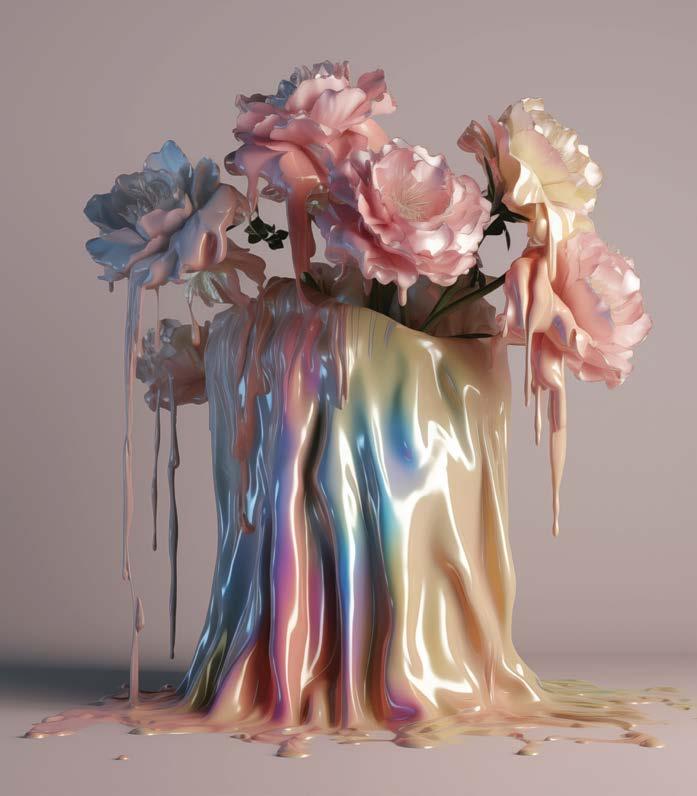
Por Natalia Vidal Toutin. Periodista (Chile)
Imágenes cortesía de la artista.
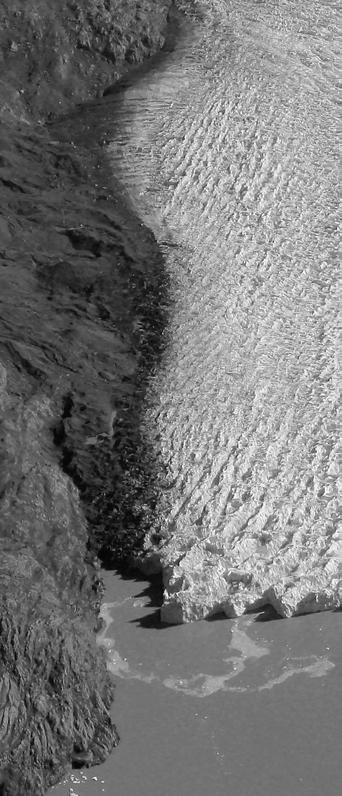

100 x 120 cm.
Los Glaciares, Santa Cruz, Argentina
Perito Moreno”, 2004/2021, registro de fotografía análoga, Parque Nacional
De la serie Campos de Hielo , “Glaciar
cuando las aguas oyen sonar el feroz sonido del deshielo, se preparan para diluir lo que algún día fueron sólidos muros custodios del planeta. Año tras año, los estruendos se repiten más y más seguido, a ratos, da la sensación de que no es el hielo el que se fractura, sino la tierra la que llora. Matilde Marín levantó vuelo para contemplar desde arriba el lugar donde el mar y el glaciar se vuelven uno. Sus fotografías, además de exhibir una majestuosidad imperceptible a ras de suelo para un espectador, muestran cómo las grandes masas de hielo se funden en un lugar donde la tibieza del calentamiento no es un destino al que desear.
Tiempo atrás, mirando la obra de Ronny Horn, había sentido cómo estos sucesos envolvían su espíritu de una necesidad impostergable de levantar la voz y visibilizar la debacle. “La biblioteca del agua”, de Horn, el libro favorito de su estantería, muestra con imágenes y relatos, los glaciares de Islandia. Las líneas se suceden para mostrar cómo silenciosamente, ante el conocimiento popular, el retroceso de sus fuerzas avanza, cada vez, con más fuerza y rapidez.
Matilde sabía que en la tierra que la vio nacer, Argentina, podía estar ocurriendo lo mismo a expensas de la ceguera que prima en la euforia colectiva de las ciudades. Así fue. Santa Cruz, provincia de la Patagonia Argentina, en la zona sur del país, aloja en su frío territorio
The field that blindness melted away
when the waters hear the fierce sound of melting ice caps, they brace themselves to dilute what were once the solid walls guarding the planet. Year after year, the rumbling comes more and more frequently and, at times, it feels as though it is not ice that is melting, but rather the planet that is weeping. Matilde Marín took to the skies to see the place where the sea and glaciers become one from above. In addition to displaying a majesty imperceptible to onlookers from the ground, her photographs show how big bodies of ice melt in a place where the heat brought about by global warming is not the desired outcome.
Some time ago, by browsing Roni Horn’s work, she felt how these events enveloped her spirit with a pressing need to raise her voice and bring awareness to the issue. Horn’s “Library of Water”, Marín’s favorite book on her shelf, features images and stories of glaciers in Iceland. The lines go on, one after the other, to show how silently, despite widespread knowledge, the retreat of glaciers increasingly advances, with greater force and speed.
Matilde knew that in her native land, Argentina, the same could be happening due to the blindness that prevails in the collective euphoria of cities. And that was indeed the case. Santa Cruz, a province in the southern part of the country, in Patagonia, houses thousand-year-old ice fields
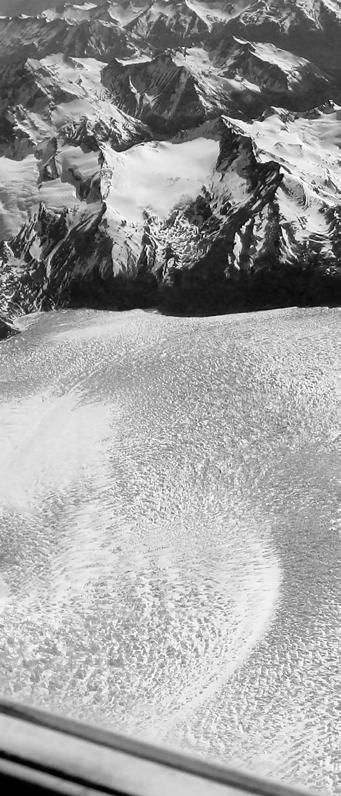
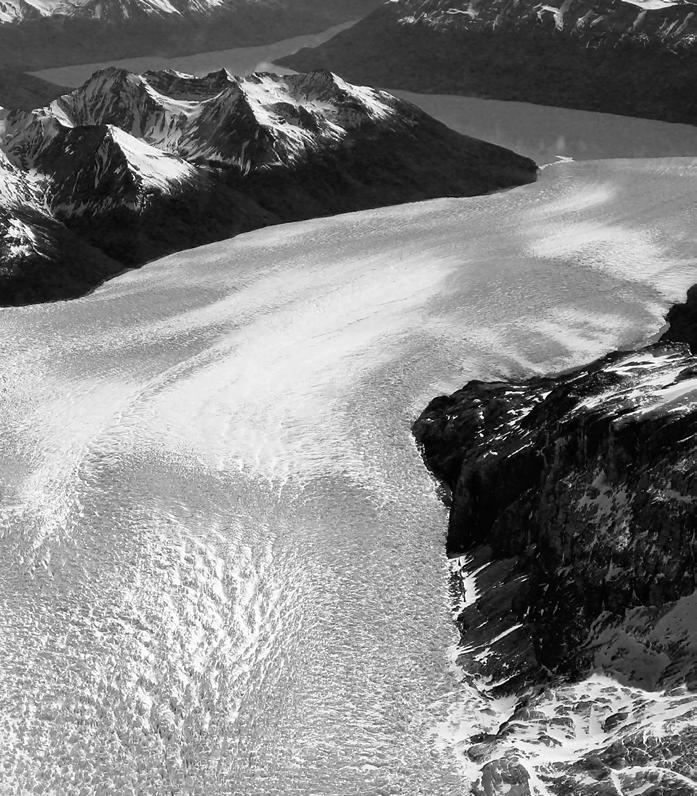 De la serie Campos de Hielo , “Glaciar
Upsala”, 2004/2021, registro de fotografía análoga, Parque Nacional
Los Glaciares, Santa Cruz, Argentina 100 x 120 cm.
De la serie Campos de Hielo , “Glaciar
Upsala”, 2004/2021, registro de fotografía análoga, Parque Nacional
Los Glaciares, Santa Cruz, Argentina 100 x 120 cm.
milenarios campos de hielo. Visitadas por turistas, geólogos, artistas y las más diversas disciplinas que se conozcan, esas columnas, a las que la naturaleza coronó con su envergadura, están desvaneciendo su poderío ante nuestros ojos y lo hacen con una elegancia inédita, como si el fin no pudiese mutilar su eterno esplendor.
“Uno es un papel en el viento”, dice la artista mientras recuerda el sobrevuelo del que nació su serie Campos de hielo. Inspirada por Horn y los glaciares nórdicos, Matilde viajó a la Patagonia en busca de concilio y respuestas. En el lugar, conoció a un piloto de avión que había presenciado con sus propios ojos, la Guerra de las Malvinas de 1982. El hombre, ya retirado, tenía un pequeño avión que usaba para pasear turistas sobre los glaciares. Matilde le dijo que era artista y él la invitó a elevar la conciencia y observar con altura de mira. Con cámara en mano, la artista trasandina levantó vuelo y registró el trayecto.
Glaciar Upsala, uno de tantos
“Lo había visto en el pasado y ahora vuelvo. El derretimiento es real, se remiten muy rápido. La naturaleza existe y está cambiando lugares que por muchos años estuvieron calmos. Hoy cobran una forma distinta”, explica.
within its cold territory. Frequented by tourists, geologists, artists, and professionals from the widest array of disciplines, these icy columns, which nature blessed with their magnitude, are diminishing in their might before our eyes, and this is happening with an unprecedented elegance as if their inevitable doom could not maim their eternal splendor.
“We are just dust in the wind,” said the artist, as she recalled the overflight that led to her series Campos de hielo. Inspired by Horn and the Nordic glaciers, Matilde traveled to Patagonia seeking solace and answers. There, she met an aircraft pilot who had witnessed the Falklands War in 1982 with his own eyes. The man, already retired, had a small plane to take tourists on short flights above the glaciers. Matilde told him she was an artist, and he invited her to raise her awareness and get a higher view. With her camera in hand, the trans-Andean artist took flight and recorded the journey.
Upsala Glacier, one of many
“I had seen it before, and now I went back. The melting ice caps are real, they dying down quickly. Nature exists and it is changing in places that were calm for many years. Today they take on a different shape,” she explains.

 De la serie Campos de Hielo , “Glaciar Perito Moreno”, 2004/2021, final de la lengua de hielo, registro de fotografía análoga, Parque Nacional Los Glaciares, Santa Cruz, Argentina
100 x 120 cm.
De la serie Campos de Hielo , “Glaciar Perito Moreno”, 2004/2021, final de la lengua de hielo, registro de fotografía análoga, Parque Nacional Los Glaciares, Santa Cruz, Argentina
100 x 120 cm.
Eso se ve en sus obras. No requiere curatoría que lo refiera, ni mayores explicaciones. Las obras de Campos de hielo, son sumamente explícitas y crudas. La Patagonia, como Islandia y los polos que protegen el bienestar de nuestro planeta, están perdiendo territorio en una guerra, que ocurriendo a viva voz, nadie parece escuchar. “El mundo va perdiendo sus recursos”, Matilde lo sabe por que lo vio. Donde había hielo, ahora hay lagunas y la batalla campea. Si viajas al lugar de los hechos no sólo lo verás, lo escucharás. Los caídos crujen, aún más fuerte que el sonido de 100 leones rugiendo al unísono, flotan mientras pueden y convierten la fuerza de su ruido en suaves, tiernas e indefensas gotas de agua.
Greenpeace sólo en 2022, publicó que el 42% de los glaciares andinos ya desaparecieron. Sin perjuicio de ello, la naturaleza es rotunda en su mensaje y las obras de Matilde lo exhiben muy bien: no dejará de enseñarnos las lecciones que necesitamos nos repitan hasta el hastío. Un baile en armonía perfecta entre montañas, paredones y aguas revoltosas. Contrastes y acaso venas, que se cuelan entre la perfecta imperfección de la montaña, fluyendo hacia un destino común, propiciado por el viento. Ese equilibrio cromático, la solidez de las formas y el fugaz, pero imperenne punto en donde la
That is evident in her pieces. No curatorial reference or further explanation is necessary. The pieces in Campos de hielo are extremely explicit and raw. Patagonia, just like Iceland and the poles that protect the well-being of our planet, is losing ground in a war that happens loudly, but no one seems to hear. “The world is losing its resources”. Matilde knows this because she saw it. Where once there was ice, now there are lagoons, and the battle rages on. Should you travel there, you will not only see it, but you will also hear it. The fallen rustle louder than 100 lions roaring in unison, they float while they can and they turn the force of their rumbling into soft, sweet, and harmless water droplets.
In 2022, Greenpeace published that 42% of Andean glaciers have already disappeared. However, nature is firm in its message, and Matilde conveys it well in her piece: it will not cease to teach us the lessons we need repeated ad nauseam. Mountains, walls, and rough waters dance in perfect harmony. Contrasts and perhaps veins slip through the perfect imperfection of the mountain, flowing to a common destiny, encouraged by the wind. This color balance, the robustness of the shapes, and the fleeting yet immortal point where nature converges,
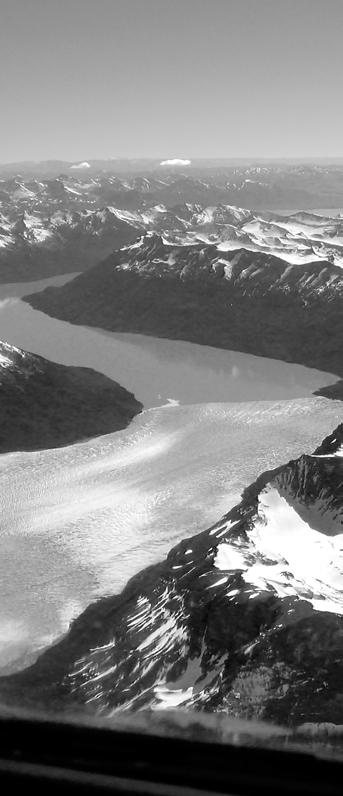

100 x 120 cm.
Cruz, Argentina
Los Glaciares, Santa
Nacional
Glaciares”, 2004/2021, registro de fotografía análoga, Parque
De la serie Campos de Hielo , “Sobrevolando
naturaleza confluye, congela, paradójicamente, un momento para la historia que no volverá a existir después de inmortalizado. La fotografía guarda lo que el calentamiento global se está llevando, rauda y vorazmente.
“La contemplación es un estado importante, amplía tanto el espacio, como la mirada”, dice Matilde Marín, perdiendo sus ojos en el recuerdo y llevando la conversación a aquel día en que el viaje le trajo la convicción de trabajar en esta serie. “Si uno mira la naturaleza, te puede enseñar muchas cosas. Primero te enseña que la paciencia trae resultados”, señala. También perspectiva y voluntad. El espectador activo y despierto que detenga su reloj un instante para observar Campos de hielo, no podrá permanecer ajeno, ni ausente a lo que ve, porque le atañe. Ha estado viviendo en su fracción de existencia, dando por hecho que las cosas permanecerán, porque el dicho dice que la naturaleza prevalece, pero ahí, frente a él, el destino está abiertamente indicando lo contrario. Y se irá con un lapso de conciencia congelando sus entrañas, queriendo cuidar aquello que nos ha sido dado para que habitemos y no hemos sabido preservar, tratando de comentar lo ocurrido para generar conciencia, para que luego, unos días después, esa motivación se pierda en el olvido.
paradoxically manage to freeze a moment in history that will never exist again after being immortalized. Photographs can capture what global warming is taking away rapidly and fiercely.
“Contemplation is an important state. It expands the space and the perspective,” Matilde Marín says, her eyes lost in her memories of the day that her fateful journey instilled in her the conviction to work in this series. “If you observe nature, it can teach you many things. At first, it teaches that patience delivers results,” she states. It can also teach perspective and willingness. Active and awake viewers who stop the clock for a moment to contemplate Campos de hielo will not be able to remain oblivious or detached from what they see because it concerns all of us. In their own realm of existence, they take for granted that things will remain because, as the saying goes, nature prevails. There, however, in the face of these pieces, fate is openly suggesting otherwise. And they will leave with a lapse of consciousness freezing their entrails, wanting to take care of what was gifted to us to inhabit and we have not known how to preserve, trying to comment on what happened to raise awareness, so that later, perhaps days later, that motivation will be lost in oblivion.
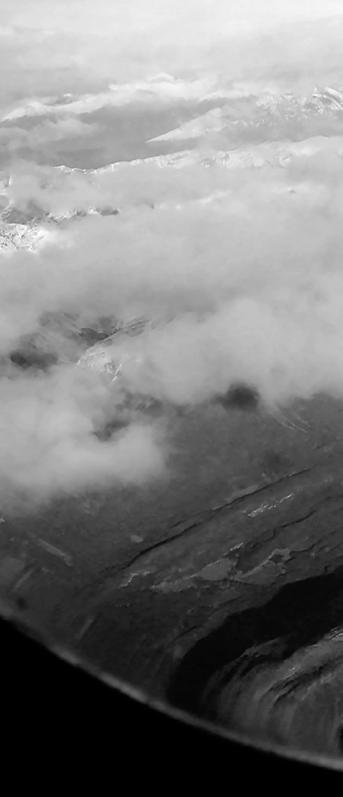

De la serie Campos de Hielo , “Altas Cumbres”, 2004/2021, registro de fotografía análoga, Parque Nacional Los Glaciares,
Santa Cruz, Argentina 100 x 120 cm.Colombia
Por Lucía Rey. Académica e investigadora independiente (Chile)
Imágenes cortesía del artista.
Representado por Casa Hoffmann.

Canto rodado a tres voces, 2019, escultura sonora; sistema de reproducción y amplificación análoga de cantos rodados. Piedra de un río seco o intervenido de modo antropogénico en Colombia. Sistema de amplificación acústico analógico en cobre, movimiento mecánico eléctrico con reducción de velocidad, caja, conos y agujas en madera, 100 x 75 x 75 cm.
La escucha resonante y la re-existencia vibratoria de lo sagrado
Resonant listening and the vibratory re-existence of the sacred “Por fuera de la epistemología hegemónica del mundo autorizado, todavía nos queda la posibilidad de lo maravilloso”.
A.J. Balmescanto rodado es una investigación artística cuyo nombre epónimo sugiere la poética sonora emanada de la vibración de los cantos rodados de las rocas al ser rozadas con otras. El artista realiza esta investigación en paisajes del agua, principalmente en Colombia, pero también en otros países, siempre a la escucha de diversos afluentes, que fueron desplegando memorias de la vida natural resonantes en los movimientos silenciosos de lo vivo. Un proyecto hermano de este es Templo del agua.
El artista se ubica en la perspectiva descentrada de la razón instrumental de la cultura antropocéntrica de Occidente. Esta actitud de escucha le permite ingresar vibratoriamente a espacios invisibles del mundo encantado, siendo, a su vez, atravesado por estados y dimensiones otras de lo humano y lo no humano, liberando la mente fetichizada, apremiada por la velocidad, el ruido y la productividad. El acto de detenerse y perderse en esa dimensión espiritual, le permite una apertura corporal para recibir el canto profundo y milenario de las rocas en la memoria de los ríos.
Los pueblos originarios de Abya Yala llaman abuelas a las piedras, porque están allí hace mucho, mucho más tiempo que nosotros. Por esta razón, conectar con las abuelas implica una actitud de apertura, para que se vayan cayendo ciertos dispositivos inconscientes de interpretación del mundo, que impiden la escucha profunda. Leonel Vásquez realiza en esta investigación un seguimiento a los flujos del agua y de las rocas, sintiendo y viendo la devastación que ha generado el capitaloceno, como por ejemplo, los envíos masivos de aguas hacia las mineras, los desvíos de ríos para generar construcciones de cemento, la desertificación y siliconización del mundo.
Frente a esto, el artista toma a las abuelas y las coloca en un altar sonoro, para llevar este rito vibratorio hacia espacios donde se ha perdido su memoria, amplificando en su escucha una resonancia curativa y mnémica en el contacto vibracional con lo antiguo y sagrado de los territorios. Así, estos cantos serán expuestos como postales sonoras y audiovisuales a través de medios digitales de la Radio Nacional de Colombia, llevando la voz de las abuelas al mundo automatizado de las ciudades y la megalópolis, a la escucha del reclamo del agua en medio del cemento.
En esta escucha, nuestros cuerpos ingresan en una geo-resonancia, haciendo vibrar lo que de las rocas hay en nuestro interior. El calcio de éstas se hace parte de nuestros huesos a través del agua, con lo cual la resonancia de las
“Beyond the hegemonic epistemology of the established world, we still have the possibility of the marvelous.”
A.J. Balmes
canto rodado is an artistic exploration whose name suggests a sound poetry emanating from the vibration of rolling pebbles when they are grazed by other rocks. The artist conducts this research in water landscapes, mainly in Colombia but also in other countries, always listening to diverse streams, which unfolded resonant memories of natural life in the silent movements of the living. A closely related project is Templo del agua
The artist places himself in a decentered perspective of the instrumental reason of the anthropocentric culture of the West. This approach to listening lets him enter the vibrating invisible spaces of the enchanted world , becoming affected by states and dimensions beyond the human and non-human, freeing the fetishized mind pressured by speed, noise and productivity. The act of stopping and loosing oneself in this spiritual dimension allows him to open up his body to receive the profound and millenarian song of the pebbles in the memory of rivers.
Native peoples in Abya Yala call pebbles grandmothers , because they have been there for a long time, long before us. For this reason, connecting with these grandmothers requires an open mind, so the subconscious mechanisms of how we interpret the world, which prevent us from truly listening, may fall. In this research, Leonel Vásquez monitors the flows of the water and the rocks, feeling and seeing the devastation that the capitalocene has brought with massive water shipment to mining companies, the diversion of rivers to develop concrete constructions, the desertification and siliconization of the world.
Bearing this in mind, the artist takes the grandmothers and puts them in a sound altar to bring this rite of vibrations back to spaces where their memories that been lost, thus amplifying in his listening the healing and mnemic resonance in the vibrational connection with the old and sacred of territories. These songs are exhibited as sound and audiovisual postcards through the digital means of Colombia’s National Radio, bringing the voice of these grandmothers to the automated world of cities and megalopolis, listening for the cries of water amid the concrete.
In this listening, our bodies enter a geo-resonance, causing whatever there is of these rocks within us to vibrate. They calcium in the rocks becomes part of our bones through water, which makes

Canto rodado Sumapaz, 2019, escultura sonora; sistema de reproducción y amplificación análoga de cantos rodados. Piedra de un río seco o intervenido de modo antropogénico en Colombia. Sistema de amplificación acústico analógico en cobre, movimiento mecánico eléctrico con reducción de velocidad, caja, conos y agujas en madera, 85 x 110 x 95 cm.
rocas alcanza una poética vibrante en nuestras mismas vértebras. Incluso, indica el artista, estando el calcio disuelto en nuestro organismo, éste participa “en la liberación de neurotransmisores durante la sinapsis, la regulación de los latidos del corazón y la coagulación de la sangre”, y ya que están nuestros oídos incrustados en el cráneo, las vibraciones sonoras percibidas auditivamente son transmitidas al cuerpo por los huesos. Así, dejándonos fluir en estas visiones materiales de la corporalidad podemos comprender la reflexión de Leonel Vásquez en torno a su obra, cuando dice que “escuchar es resonar en los huesos por las rocas”.
De manera que esta escucha sentipensante , como praxis des-colonial, no parte únicamente en una dirección racional o solo auditiva, la escucha será con la consciencia. Un proceso de activación de la inteligencia corporal despertada por la inteligencia cósmica, en la búsqueda de un aprendizaje de los fluidos planetarios, más allá de los barrotes de la tecnósfera
El artista trabaja en las coordenadas de las epistemologías del Sur, y el giro ontológico, con las ontologías relacionales, que surgen como praxis en la misma relación con la naturaleza, que se despliega políticamente en la resistencia a la devastación, como también espiritualmente en la re-existencia de diversidades y ecologías del ser. Estos procesos de liberación en la escucha son también caminos de auto-transformación, en el trance de sentir pensando y de pensar sintiendo (Orlando Fals Borda), cuyo horizonte dibuja el devenir de la des-instrumentalización del planeta viviente y la activación de los espíritus de los mundos y de los cuerpos. Como escribe Eduardo Kohn, la vida piensa, los pensamientos están vivos.
En esta investigación sonora, el artista sincronizado es tomado por esta fuerza milenaria, como una mística animista de lo sagrado para llegar, finalmente, al momento del hallazgo inesperado, que es la cualidad curativa de su obra, como posibilidad de expansión en estados meditativos de escucha. Esta experiencia nos lleva a imaginar un mundo en que el arte, en conexión con la naturaleza viva, nos lleva a una nueva cultura de liberación y sanación, luego de siglos de destrucción sistemática de lo viviente, amparada en una metafísica dualista dominante. En este sentido, Leonel Vásquez puede ser entendido como un canal a través del cual la naturaleza, que ha sido puesta en una especie de apartheid de espacios verdes, recobre sus extensiones, vibratoriamente, en las conciencias humanas. En estos tiempos de crisis civilizatoria, probablemente, la figura del chamán se re-visibilice desde un arte curativo.
the resonance of the rocks reach a vibrant poetry in our vertebrae. The artist even claims that the calcium dissolved in our systems is involved in “the release of neurotransmitters in synapses, regulating heart beats, and blood coagulation.” With our ears embedded in our skull, the sound vibrations we perceive are transmitted to the body through our bones. By letting ourselves flow in these physical visions of corporeality, we can understand Leonel Vásquez pondering on his own work, when she states that “listening is resonating in the bones through the rocks.”
Thus, this feeling-thinking listing as a de-colonizing practice does not stem from a rational or auditory approach, listening is performed through consciousness. This is an about the activation of body intelligence awakened by cosmic knowledge in the pursuit of planetary flows beyond the walls of the technosphere
The artist works from the coordinates of the epistemologies of the South, and an ontological shift with relational philosophies, which emerge as practice within the very connection with nature and politically unfolds in the resistance to devastation, as well as spiritually in the re-existence of the diversities and ecosystems of the self. These liberation processes in listening are also the path to self-transformation in a trance of feeling by thinking and thinking by feeling (Orlando Fals Borda), whose horizon draws the future of the de-instrumentalization of the living planet and the activation of the spirits of the worlds and bodies. As Eduardo Kohn wrote: “life thinks; thoughts are alive.”
In this sound research, the synchronized artist is taken by this millenarian force, like an animist mystique of the sacred, to finally reach the moment of an unexpected finding, where the healing nature of his work lies, as a possibility of expansion in meditative states of listening. This experience leads us to imagine a world in which art, in connection with nature, leads us to a new culture of liberation and healing, after centuries of systematic destruction of the living, under the guise of dominant dualistic metaphysics. In this sense, Leonel Vásquez can be regarded as a channel through which nature, which has been placed in a kind of apartheid of green spaces, can recover its full vibrational expanse in human consciousness. In these times of civilization crises, the figure of the shaman is probably brought back to life through a healing art.
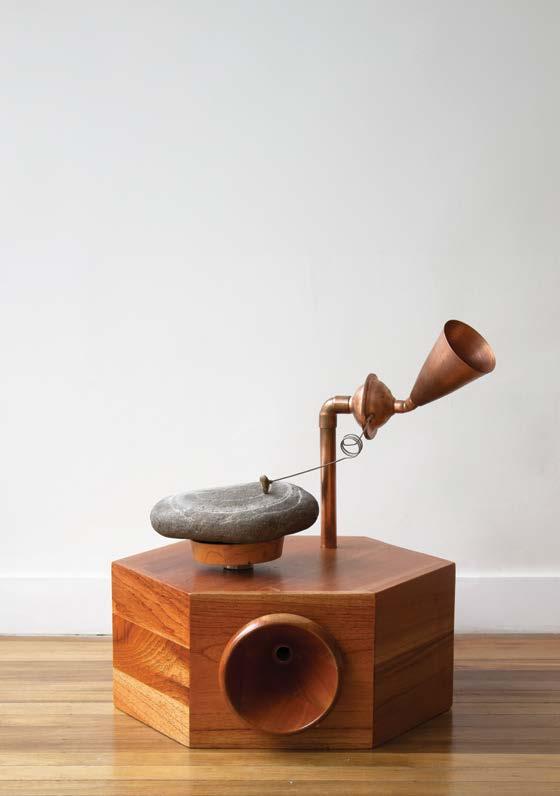
Canto Rodado Modular, 2019, escultura sonora; sistema de reproducción y amplificación análoga de cantos rodados. Piedra de un río seco o intervenido de modo antropogénico en Colombia. Sistema de amplificación acústico analógico en cobre, movimiento mecánico eléctrico con reducción de velocidad, caja, cono y aguja en madera, 50x 45 x 45 cm.



Mostrar que la creación puede ser una batalla innata
un cromosoma adicional puede generar cambios radicales en un feto, cuando es el 21, la respuesta es sencilla en términos médicos: síndrome de Down, pero probablemente sea más complejo para la familia, para los padres, ¿qué cuidados requerirá?, ¿cómo nos adaptaremos a una persona con capacidades diferentes? El cariño, el respeto y la confianza, sin lugar a dudas, le dan a estas personas una atención especial, un lugar seguro donde se pueden desarrollar de forma plena, para trabajar y hacer sus vidas de la manera más funcional posible.
Este es el caso de Isabella Springmühl, quien sentía la necesidad de comunicarse, de expresar, de mostrar que ella podía hacer cosas originales que impactaran al mundo. El apoyo de sus padres, sin dudas, fue fundamental. Verónica Riedel, quien tuvo la oportunidad de trabajar con ella en este proyecto, decidió invitarla a un bosque porque Isabella que -
Showing creation can be an innate battle
an additional chromosome can cause radical changes in a fetus; when it is the 21st, the result is clear in medical terms: Down syndrome. However, the most complex part fall on the family, the parents: What care would that child need? How will we adapt to a differently abled person? Love, respect, and trust undoubtedly provide these people with special care, a safe place where they can develop fully, work and make their lives as functional as possible.
This is the case of Isabella Springmühl, who felt the need to communicate and express herself to show she could do original things that would shake the world. Her parents’ support was, with a shadow of a doubt, fundamental. Verónica Riedel, who had the chance to work with her in this project, decided to invite her to a forest because
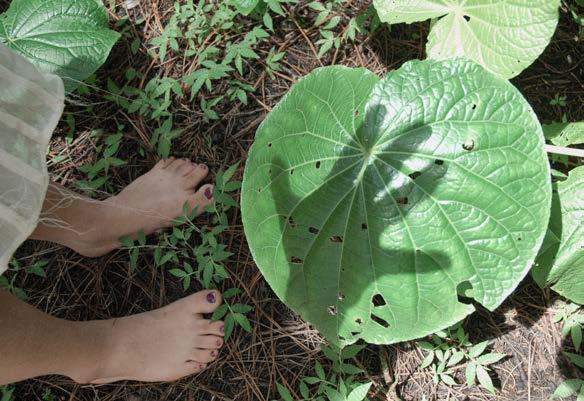
ría aprender de fotografía, en ese lugar, sin embargo, Isabella soltó la cámara y comenzó a integrarse con el bosque sensorialmente, como si fuera parte del espacio y el espacio de ella, por esta razón Verónica registró en video, durante todo un día, las expresiones de Isabella, sus gestualidades, su forma de interactuar con la naturaleza y la fuerza que imprimía en cada uno de sus actos fueron impactantes para la artista y cineasta, quien quedó impactada con la creatividad de esta niña. Años después, Isabella se había convertido en una diseñadora de modas de renombre, la capacidad de crear estaba en sus manos y fue el vestuario el medio por el cual alcanzó lo que deseaba desde pequeña.
¿Qué te llamó la atención sobre Isabella cuando se conocieron?
Bueno, estuve un día entero con ella porque era muy divertida,
she knew Isabella wanted to learn photography. There, however, Isabella put down the camera and started to connect her senses to the forest’s, as if she were part of the space and the space were a part of her. For this reason, Verónica recorded a video, over an entire day, capturing Isabella’s expressions, gestures, and her way of interacting with nature. The strength with which she performed all these actions stuck the artist-filmmaker, impressed by the child’s creativity. Years later, Isabella became a renowned fashion designer. The ability to create was in her hands, and clothing was the means by which she achieved what she had dreamed of since childhood.
What captured your attention about Isabella when you met?
Well, I was with her an entire day because she was fun,

con muchas ganas de fotografiar, de hacer dibujos con sus manos en las hojas, de sentirse a sí misma en el bosque y de descubrir lo que este espacio podía entregarle. Era super curiosa y filmé todo este video pensando que era super especial, creativa y avanzada igual. Sin embargo, el video no se mostró en ese momento sino hasta el año 2023, por la historia de Isabella.
¿Por qué consideraste que la exposición debía ser inmersiva? Quería que las personas vivieran el momento, cuando Isabella entró en el bosque y empezó a caminar. Pensé que la gente podía ver el video, pero también sentir, de alguna forma, lo que ella vivió en el bosque, por eso incluí las mismas hojas que habían ahí, en el suelo. Era importante, también, incluir impresiones con fotos del lugar; sonidos de las hojas, de pájaros, pero también del ambiente que era un poco lúgubre; tenía una mezcla lumínica natural, pero también había bastante oscuridad en algunos espacios.
she was eager to photograph, draw with her hands on the leaves, feel part of the forest, and discover what that place could give her. She was very curious and I filmed the video thinking she was special, creative, and also advanced. However, the video was not shown until 2023 because of Isabella’s story.
Why did you think the exhibition need to be immersive?
I wanted people to experience the moment when Isabella went into the forest and started walking. I thought people could watch the video, but also somehow feel what she experienced in the forest, which is why I included the leaves that where there on the floor. It was also important to include prints with pictures of the place, and the sounds of the leaves and birds, as well as conveying that the atmosphere was a bit grim. It had natural lighting but there was also plenty of darkness in some places.
El sueño de ISABELLA 4 , 2023, fotografía digital, medidas variables.
¿Cuál es la importancia de las hojas?
Las hojas logran generar el ruido exacto que había en el bosque cuando ella caminaba a pies descalzos, lo cual le impactó muchísimo por estar en contacto con estas texturas y sonidos, esto lo quise recrear y esa es parte de su importancia. A la vez, representan a la naturaleza porque abajo del bosque frondoso y verde, se encuentran estas hojas secas; pero es también símbolo de la libertad que disfrutaba esta niña al estar en el bosque.
¿Qué consideras que intentaba comunicar Isabella con sus manos y movimientos?
La niña buscaba más de lo que solo había ahí. Yo pensaba que se quería comer el bosque, quería jugar con el bosque, demostrar que ella podía actuar, o ser, o inventar algo. Es una niña muy creativa, estaba haciendo dibujos con las
What is the significance of the leaves?
Leaves can create the same noise that was in the forest when she walked barefoot, which had a great impact on her because she was in contact with these textures and sounds. That is what I wanted to recreate and part of why it was important. At the same time, they represent nature, since dry leaves are under the lush and green forest. They are also symbols of the freedom this child felt in the forest.
What do you think Isabella was trying to communicate with her hands and movements?
She was seeking for more of what can only be found there. I thought she wanted to eat the forest, play with it, show that she could act, or be, or invent something. She is a very creative girl; she traced drawings with her

manos y me parecía espectacular que ella se viera reflejada de esa forma.
Y esa gran creatividad, esa conexión con el bosque, parecieran ser emociones o formas que siguen vivos en Isabella, quien se convirtió en la primera diseñadora guatemalteca con síndrome de Down, logró participar de la semana de la moda en Londres en 2016 y el mismo año fue elegida en la lista 100 mujeres de la BBC, todo esto a pesar de que le negaron el acceso a la universidad cuando quiso estudiar diseño de modas. En su marca, Down to Xjabelle , además, trabaja con más de 120 mujeres indígenas de su país para desarrollar sus diseños, los que tienen fuerte influencia del folklore guatemalteco y se basan en fibras naturales. Sobre sus éxitos, la diseñadora ha señalado en entrevista con Univisión que: “Muchos piensan que las personas con Down
hands and I thought it was spectacular that she saw herself reflected in that way.
That creativity and connection with the forest seem to remain alive in Isabella, who became the first Guatemalan designer with Down syndrome. She managed to participate in London Fashion Week 2016, the same year she was in the BBC’s 100 most influential women list, accomplishments she attained despite being denied access to university when she applied for fashion design. In her brand, Down to Xjabelle , she works with over 120 Guatemalan indigenous women to develop her designs, which are heavily influenced by her country’s folklore and use natural fibers. Regarding her accomplishments, the designer stated in an interview with Univision: “Many think people with Down syndrome are useless but that
El sueño de ISABELLA 6 , 2023, fotografía digital, medidas variables.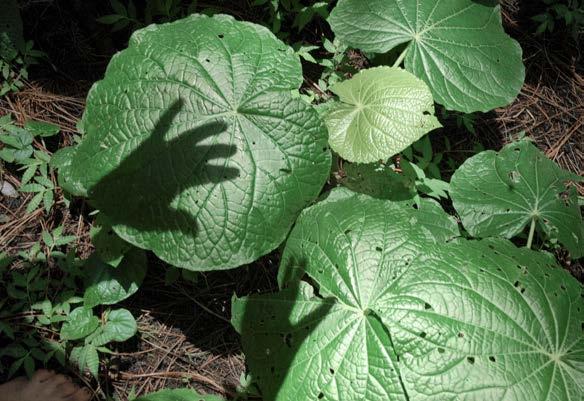
no servimos para nada, pero no es así, somos inteligentes y podemos lograr todo lo que nos proponemos”.
Con la exposición Una experiencia inmersiva de video experimental, Verónica Riedel aborda una forma diferente a la que acostumbra para hacer arte visual, se sale de sus límites para dar cabida a una joven diseñadora cuya historia de vida puede replicarse por el mundo para dar ánimo y esperanza a las personas con capacidades diferentes; pero a la vez, mantiene su temáticas de trabajo vinculadas al mundo natural, así como se observa en las diversas fotografías que la artista ha desarrollado en sus exposiciones y series de trabajo, como en Neo geo-grafía, donde observamos montañas de escombros de naturaleza muerta o vegetación seca, sobre ellas un vestigio de basura humana se alza prepotente, como si estuviese arruinando todo aquello que se puede regenerar del ambiente. O, bien, en Juegos íntimos , donde aborda la condición de la mujer en la sociedad actual, retando al espectador a un diálogo íntimo y sincero.
is not the case. We are smart and we can achieve anything we set out minds to.”
With the exhibition An immersive video experience, Verónica Ridel approaches visual arts in a way that is different for her usual artwork. She pushes her limits to showcase a young designer whose life story can be told around the world to provide motivation and hope for those who are differently abled. However, the nature-focused themes in her work are still present in this sample, just like in the artist’s other photographs, exhibits and series such as Neo geo-grafía , with its piles of dead nature and dry vegetation, on which a vestige of human waste rises overbearingly, as if it were ruining everything that can be regenerated from the environment. In Juegos íntimos , she addresses the state of women in today’s society, challenging the viewer to engage in an intimate and sincere dialog.
Por Javiera Fernández. Periodista (Chile)
Imágenes cortesía de la artista.
Representada por Isabel Croxatto Galería.
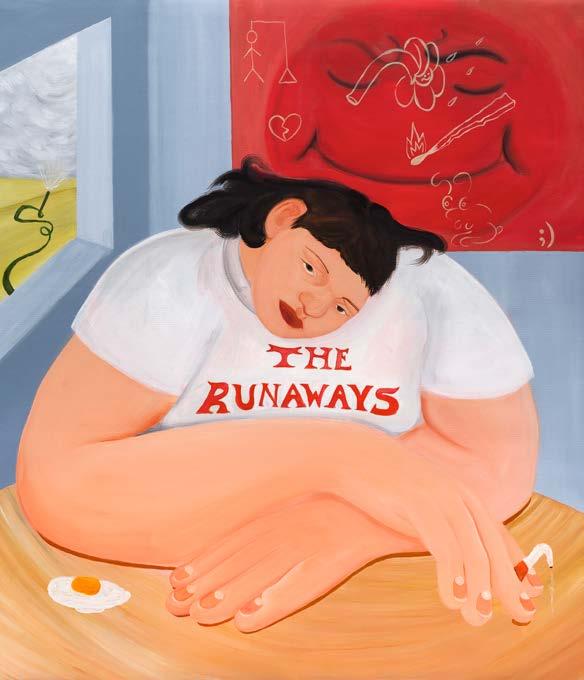
s on siempre mujeres. Sus cuerpos, anchos y deformados, abarcan gran parte de las escenas pictóricas y se sitúan en diferentes rincones del espacio doméstico, convirtiendo la privacía en territorio idóneo para reflexionar sobre la propia vida en su pasado y presente. Figuras femeninas con miradas plácidas, algunas ensimismadas y con poses aletargadas componen los cuadros rebosantes de nostalgia, cubiertos de objetos que reflejan esos pequeños placeres que acompañan y alivianan la rutina: una copa de vino, una taza de café, un cigarro, un libro. Dentro de esa atmósfera es que se fija la presencia de las mujeres retratadas, algunas completamente desnudas encima de una silla, frente al espejo del baño, o en medio de un jardín. Para su artista, la chilena Mara Faúndez, son todos retratos que operan como un potente ejercicio de confrontación personal.
Cuando Mara Faúndez pinta, dice, lo que busca es proyectar diferentes versiones de sí misma, develando parte de su mundo interno para convertirlo luego en ejercicio plástico, donde su presente como artista se colma de imágenes del pasado que registra a través de escenarios domésticos y las figuras femeninas que en ellos habitan. Una vuelta a tiempos remotos, sostiene la artista, que reflectan la comuna de Paine, el lugar donde nació: “Para mí es un contraste entre la vida citadina, el presente, y el campo, el pasado; relación que me produce ambivalencia, un estado de confusión por sentimientos encontrados. Desde ese sentir reconozco estos estados introspectivos, del vivir un poco ensimismada”.
Esa sensación de recogimiento que menciona la creadora, proyectada en los rostros de las figuras femeninas de sus cuadros, representan entonces sus propias cavilaciones sobre el mundo que habita y, también, lo que significa ser artista y ser mujer nacida en el sur del planeta, en una zona rural. A ello, además, se suman sus reflexiones en torno a lo que conlleva cargar un cuerpo femenino, de manera que el espacio privado -habitado por las figuras retratadas en parcial o completa desnudez, o vestidas- se transforma en un terreno político para pensar el cuerpo y sus violencias históricamente aglutinadas. En particular, a través de sus mujeres voluminosas, la artista problematiza la mirada masculina que aún prima en el mundo del arte. “Desde que empecé a pintar y, paralelamente, siempre mirando referentes, surgió una inquietud por verse representada desde una mirada no-lujuriosa y cercana. La historia del arte no podría estar más plagada de mujeres desnudas pintadas por hombres, y cuando el hombre ha sido partícipe de estas escenas, se representa a sí mismo vestido, sugiriendo claramente una posición de poder”.
their bodies, broad and exuberant, encompass a large portion of the scenes, which take place in different corners of the domestic space, thus turning privacy into an ideal territory to reflect on one’s own life, both past and present. Female figures with calm looks, some of them withdrawn in drowsy poses, make up paintings brimming with nostalgia, full of objects representing the small pleasures that are part of and lighten up routine: a glass of wine, a cup of coffee, a cigarette, a book. Such is the environment in which the presence of the portrayed women is captured, some of whom are fully nude on a chair, in front of a bathroom mirror or in the middle of a garden. For Chilean artist Mara Faúndez, all these portraits serve as a powerful exercise in self-awareness.
When Mara Faúndez paints –she states–, she is seeking to project different versions of herself. After unveiling part of her inner world, she engages in a plastic exercise in which her present artist self is overflown with images from the past that she records through the domestic scenarios and the female figures that inhabit them. It is a return to olden times –she asserts– in Paine, where she was born: “For me, it is about the contrast between city life in the present and country life in the past, a connection towards which I feel ambivalent and somewhat confused due to mixed feelings. From that emotion, I can recognize these introspective states of living a bit withdrawn.”
This feeling of withdrawal that the creator mentions, is reflected on the faces of the women in her paintings, thus representing her own musings on the world she inhabits, on what it means to be an artist and a woman who was born in the southern the southern region of the planet, in a rural area. In addition to this, there are other reflections around inhabiting a female body. In this way, the private space –whether occupied by the partially or fully nude, or dressed figures in the paintings– is transformed into a political arena for thinking about the body and the violence it has historically attracted. Particularly through the depiction of full-figured women, the artist questions the male gaze that still reigns in the art world. “Since I started painting and simultaneously looking at references, a desire to see women represented through a non-lustful and closeup viewpoint emerged. Art history could not be more plagued with naked women painted by men and, when men are part of these scenes, they are portrayed clothed, clearly suggesting a position of power.”

, 2023, acrílico y esmalte al agua sobre tela, 90 x 80 cms.
Como respuesta a ese poderío masculino visual, Mara Faúndez ha gestado un imaginario plástico y autobiográfico que emplaza la desnudez y la subjetividad femenina desde los márgenes, anudando su propia identidad en ese ejercicio. Así, en sus cuadros con cuerpos no hegemónicos que habitan el espacio privado en soledad, también está el suyo propio. “Los cánones de belleza desde tiempos inmemorables han sido permeantes en cuanto a cómo nos percibimos a nosotros mismos. Este fenómeno de la dismorfia corporal solo ha ido empeorando con el tiempo; las figuras pesadas, contundentes, desproporcionadas, que podemos ver en mis pinturas, tienen que ver con esa percepción distorsionada del cuerpo. Entonces decidí no seguir echándole leña a ese fueg o, encontrando algo inexplicablemente liberador en la anti-pose, desprenderse de lo canónico como una forma de liberarse de las imágenes perfectas”, reflexiona.
En añadidura a esa intención de romper con el canon visual, las mujeres de Mara no abarcan el espacio pictórico con inocencia, sino que logran transmitir un erotismo y una sensualidad que les es propia, según la artista, no sujeto a miradas moldeadoras. He ahí también la apuesta de la chilena por construir un lenguaje antihegemónico en torno al cuerpo.
Interesada en artistas como Jamian Juliano-Villani, Sarah Lucas y Philip Guston, y particularmente en el lenguaje cinematográfico de la directora argentina Lucrecia Martel, Mara construye un relato que convierte el ámbito cotidiano en el lugar donde flotan las cavilaciones humanas más profundas: los anhelos inexorables, los recuerdos nostálgicos, las fantasías y los pensamientos insurrectos. Mediante las poses descansadas de las mujeres en sus imágenes, envueltas en el tedio de la rutina y el deseo por transitar mundos idílicos, la artista logra evocar esos escenarios tan propios de Lucrecia Martel. “Me reflejo en sus películas en varios ámbitos, en especial su forma de abordar el cotidiano. Esta estética del letargo, de la siesta, donde a simple vista vemos entornos plácidos, calmos, pero a medida que nos adentramos en la narrativa vamos descubriendo cosas que nos inquietan, que corrompen esa tranquilidad”, explica.
El arte, concluye Mara Faúndez, ayuda a comprender mejor nuestro presente. “Transformar recuerdos oscuros en algo tangible a través de imágenes, puede funcionar como una suerte de terapia, en el sentido de lo revelador que puede ser, como también nos permite procesar emociones y experiencias pasadas de manera más concreta. Creo que el arte y distintas formas de creación visual ofrecen una vía para reinterpretar y dar nueva forma a nuestras memorias”.
As a response to this visual male power, Mara Faúndez has gestated plastic and autobiographic imagery that brings forward female nudity and subjectivity from the margins, tying her own identity in this exercise. Thus, in these paintings with counter-hegemonic bodies inhabiting private spaces on their own, you can also find hers. “Beauty ideals have permeated into our perception of ourselves since time immemorial. The phenomenon of body dysmorphia has only worsened over time; the heavy-set, full-bodied, and disproportioned figures we can see in my paintings have to do with that distorted perception of the body. I decided not to add fuel to the fire , and found something inexplicably liberating in counterposes, in getting rid of ideals as a way of becoming free from perfect images,” she reflects.
In addition to that intention to break away from visual ideals, Mara’s women do not embrace the pictorial space with innocence but manage to transmit an inherent eroticism and sensuality, which according to the artist, does not submit to molding glances. Therein lies the Chilean artist’s commitment to build a counter-hegemonic language around the body.
Interested in artists such as Jamian Juliano-Villani, Sarah Lucas, and Philip Guston, and particularly the cinematographic language of Argentinean director Lucrecia Martel, Mara builds a story that turns the daily environment in a place where the deepest human musings float: unyielding desires, nostalgic memories, fantasies, and rebel thoughts. Through the laid-back poses of the women in her pictures, enveloped in the ennui of routine and the desire to travel through idyllic worlds, the artist successfully evokes the signature scenes of Lucrecia Martel’s work. “I relate to her movies in several ways, particularly in the way she addresses daily life. At a glance, in this lethargic aesthetic of napping, we see peaceful and calm environments, but upon closer examination of the narrative, we discover unsettling things that disrupt that calmness,” she explains.
Art –Mara Faúndez concludes– helps us better understand our present. “Transforming dark memories into something tangible through images can serve as a sort of therapy, in the sense that it can be very revealing and allow us to process past emotions and experiences more concretely. I think art and the different ways of visual creation offer a way of reinterpreting and reshaping our memories.”
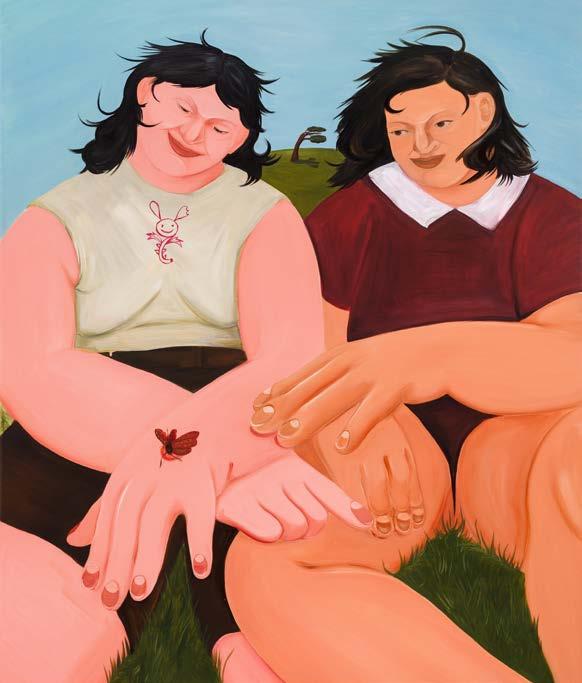
, 2023, acrílico y esmalte al agua sobre tela, 120 x 100 cm.
